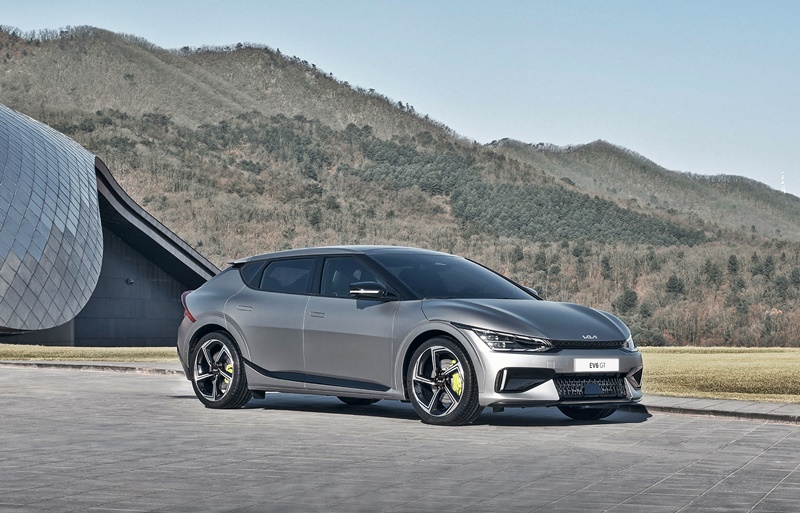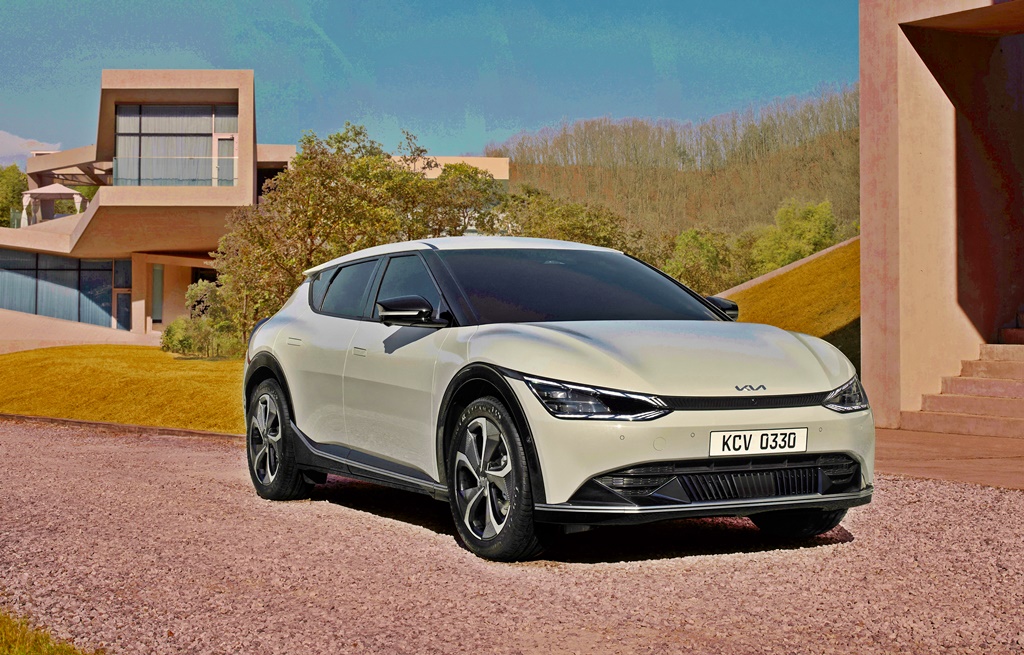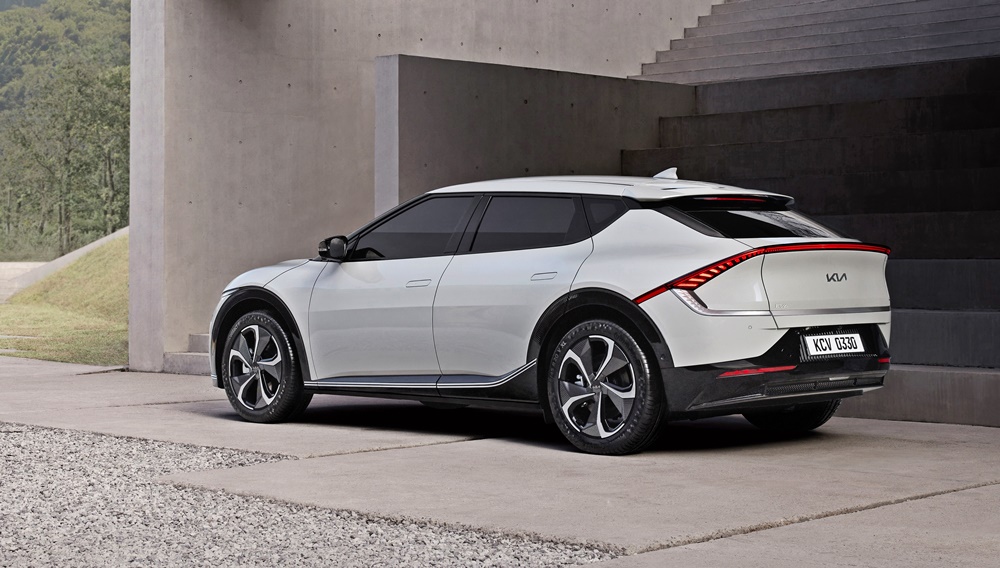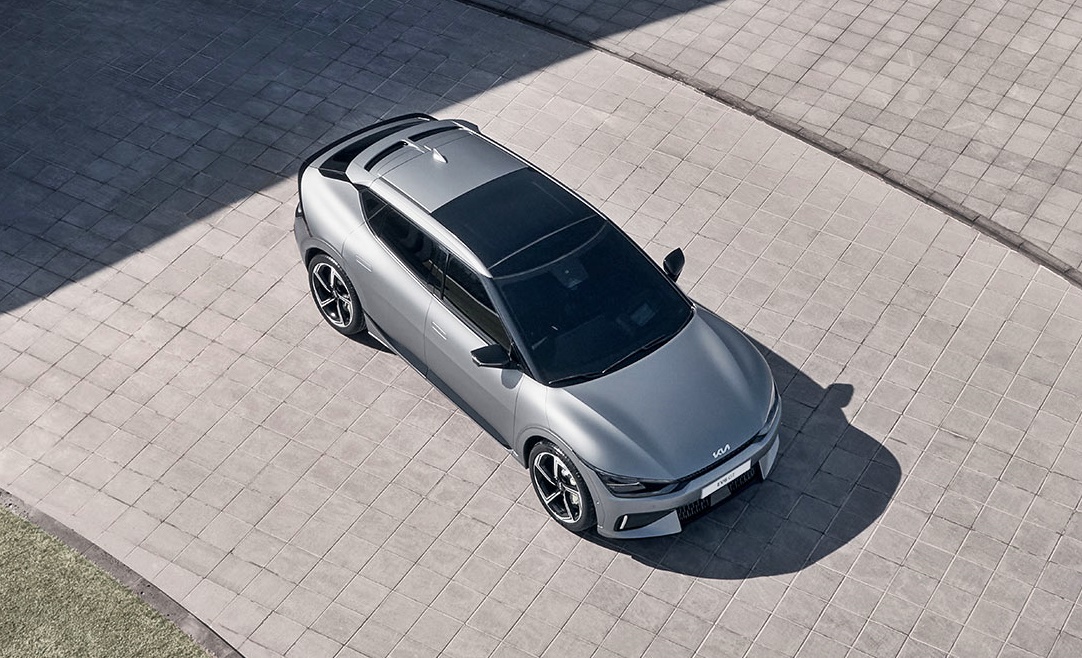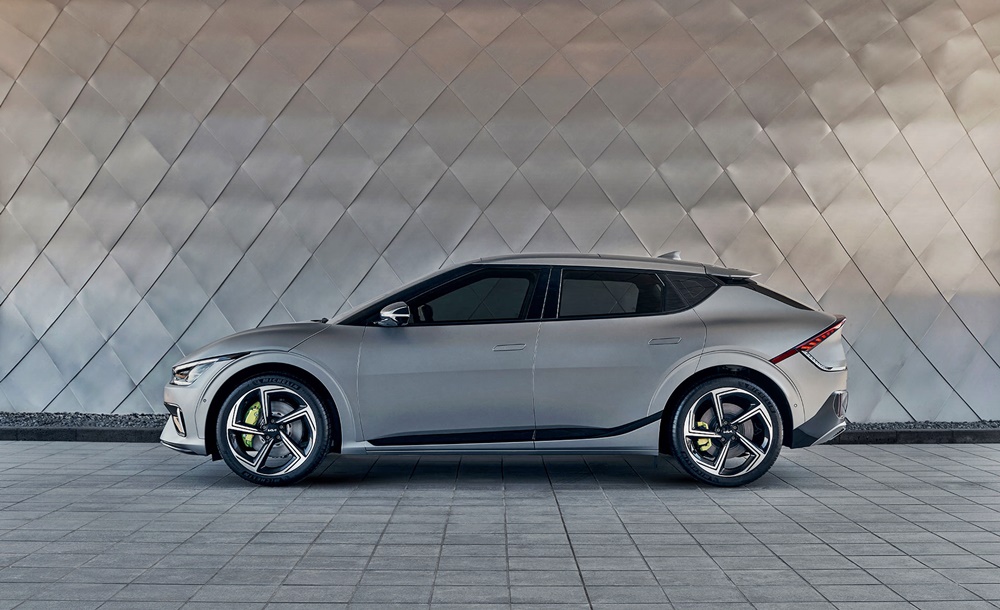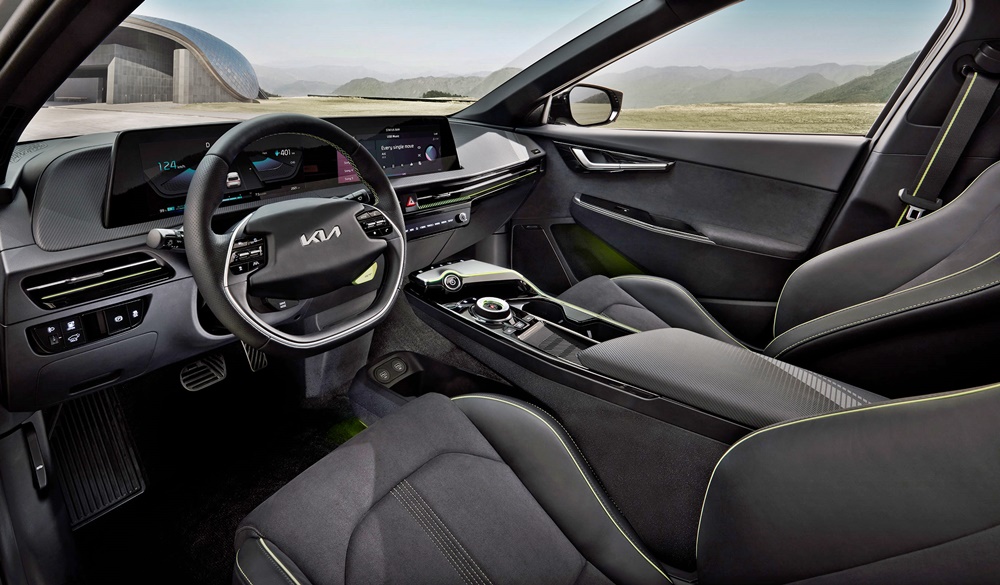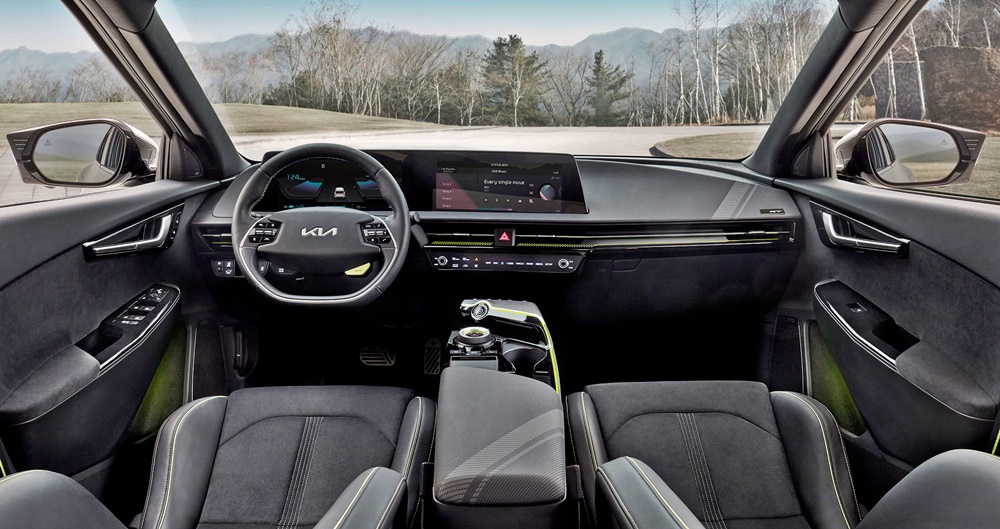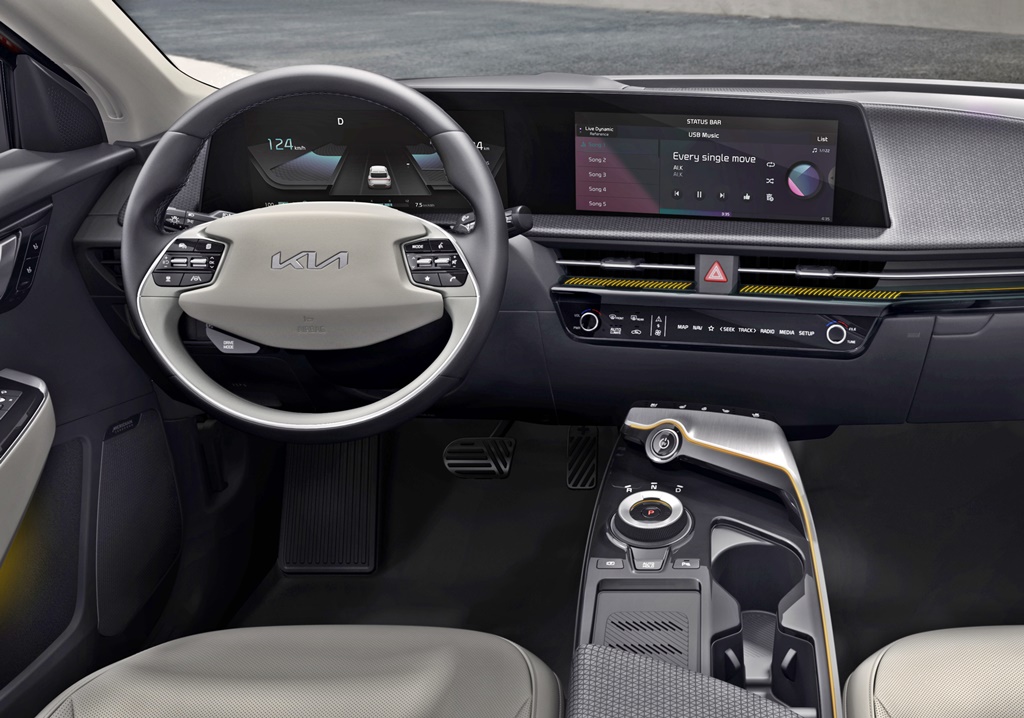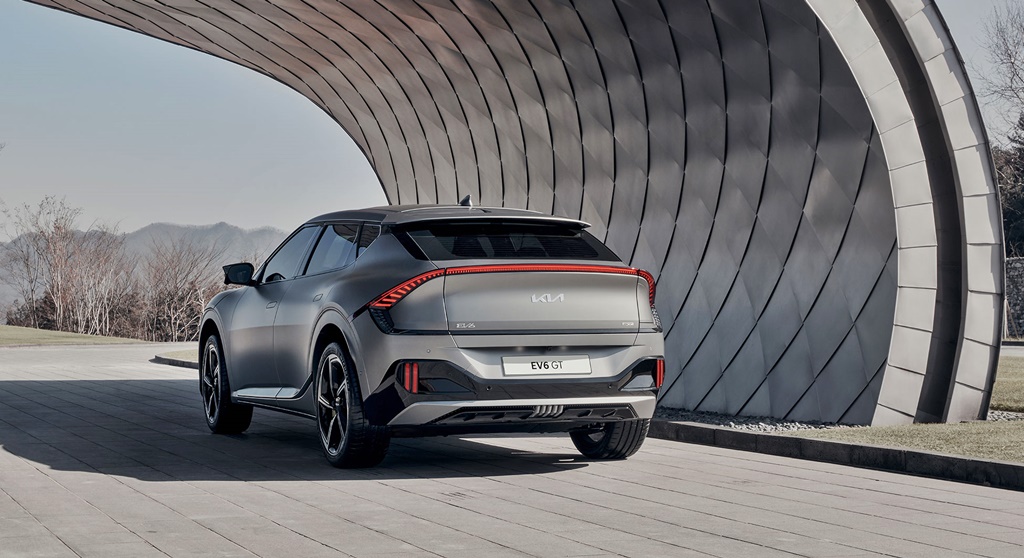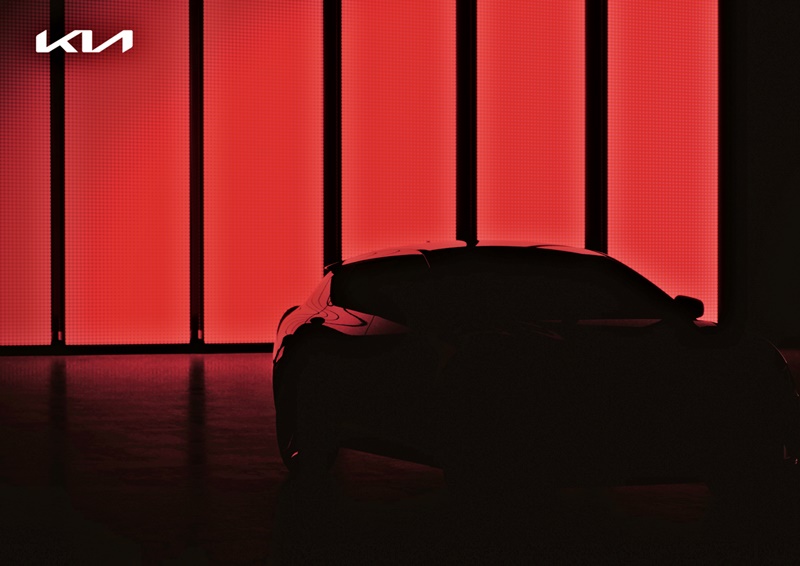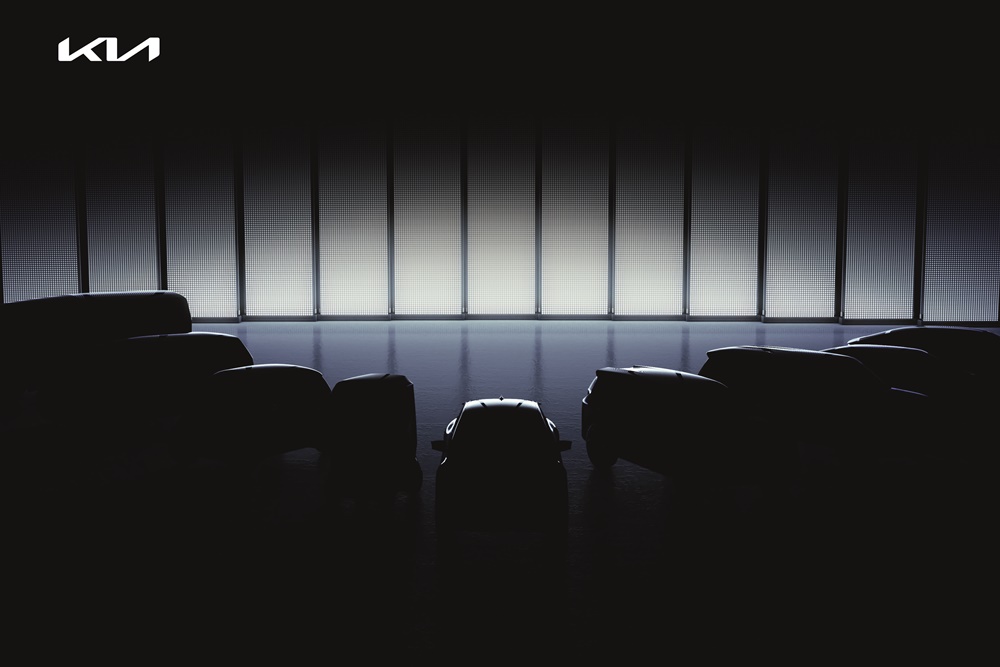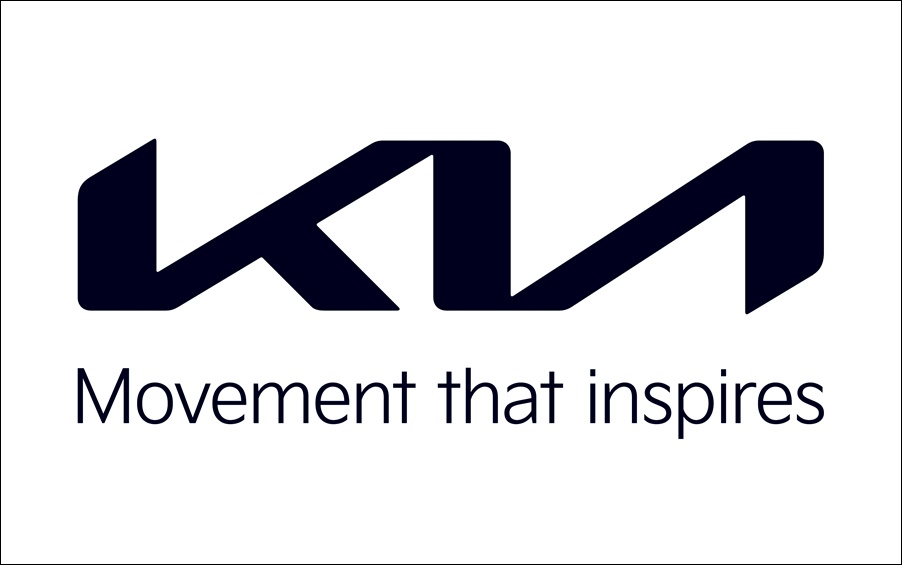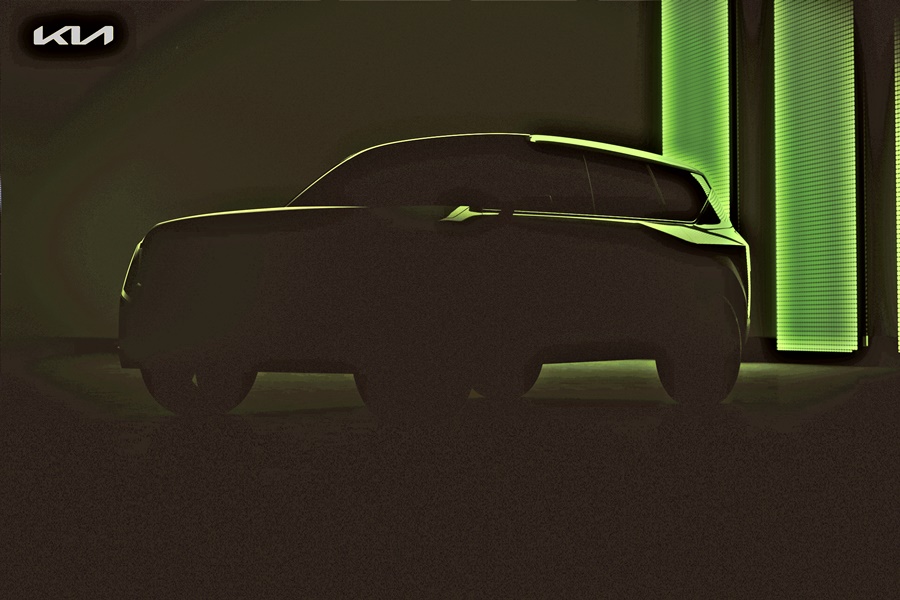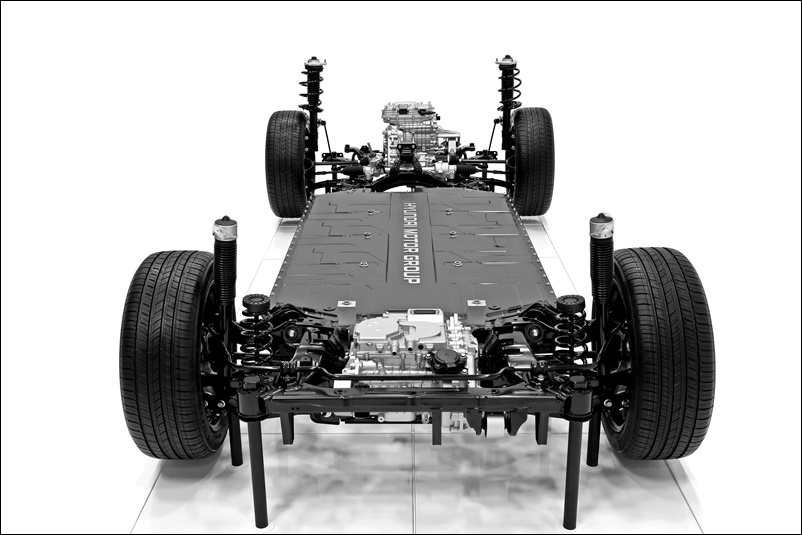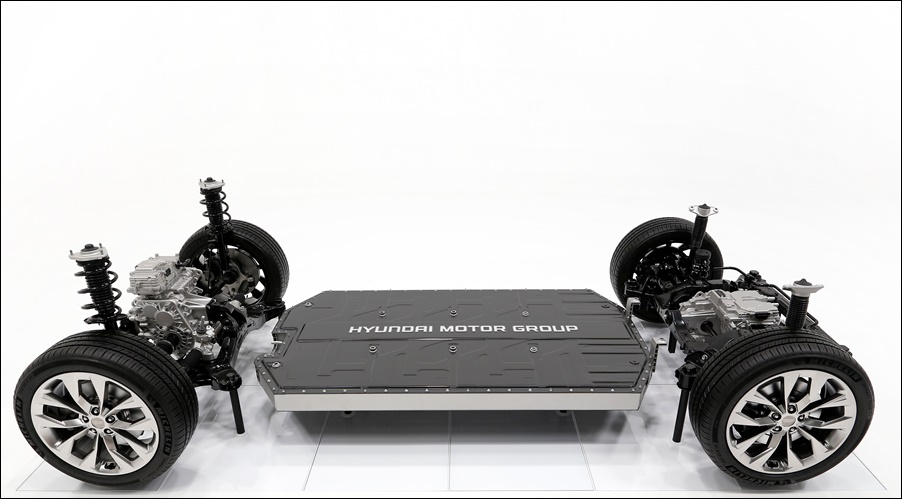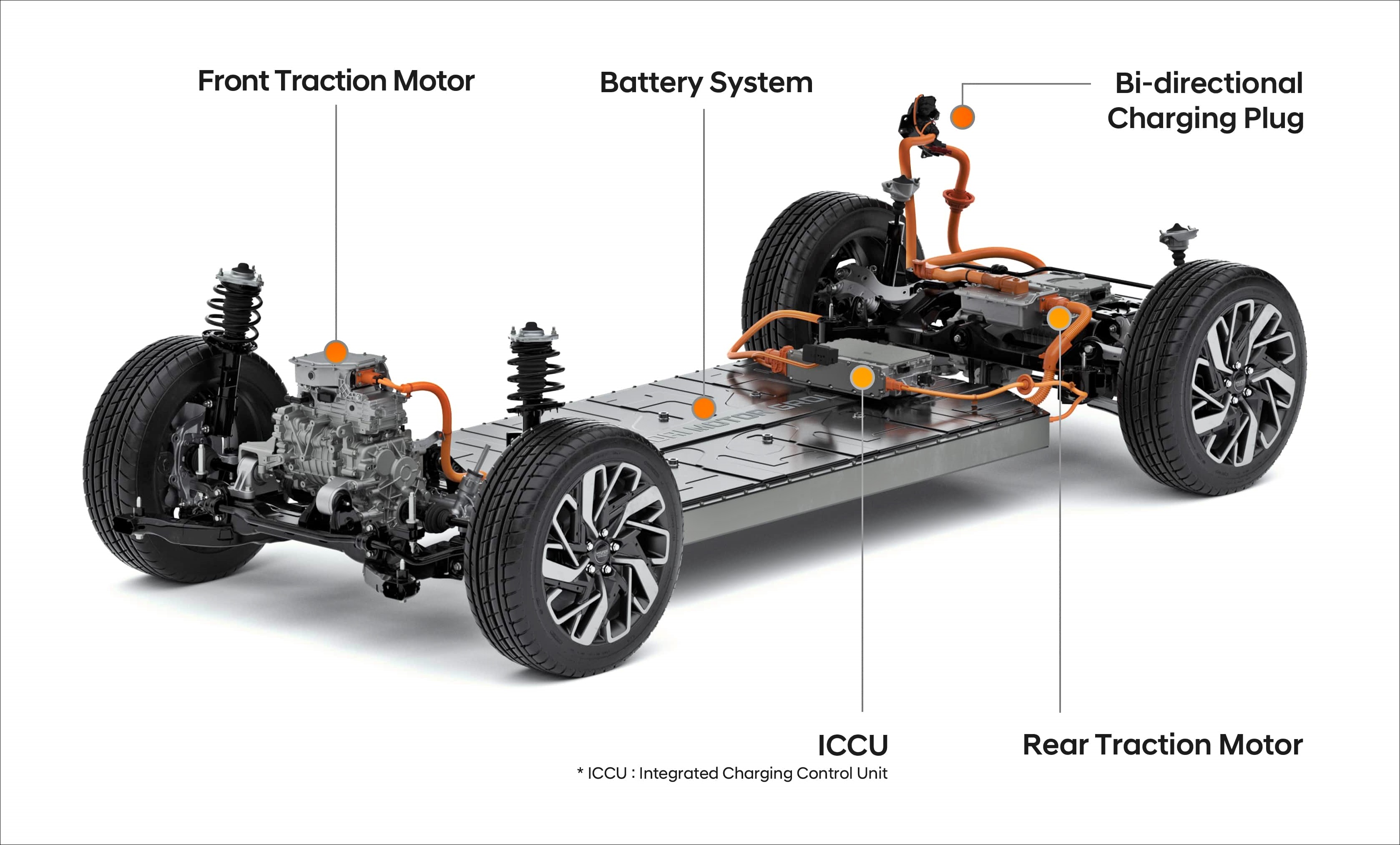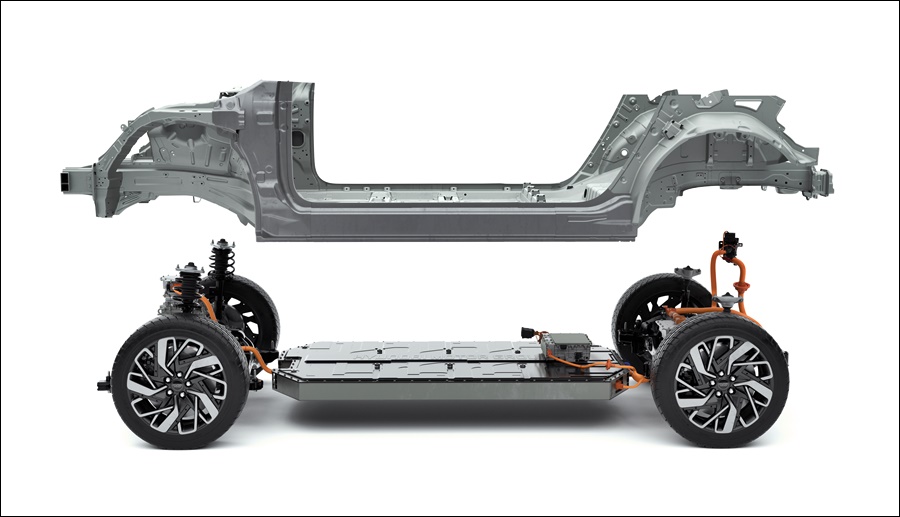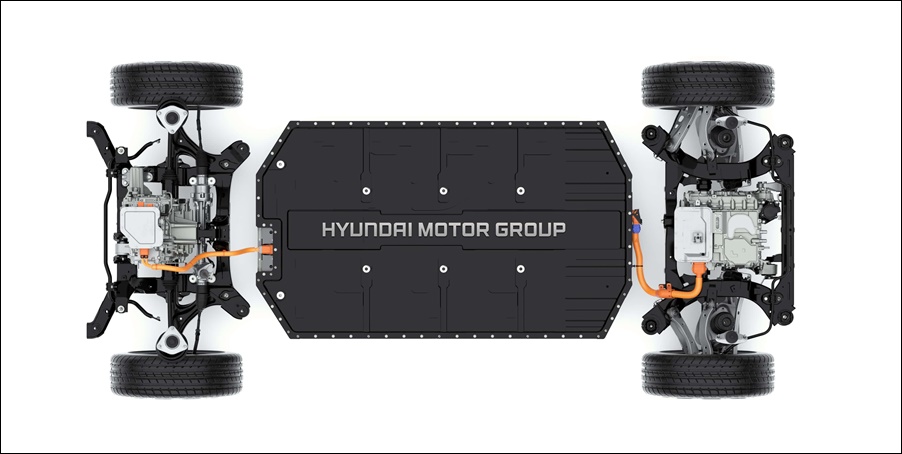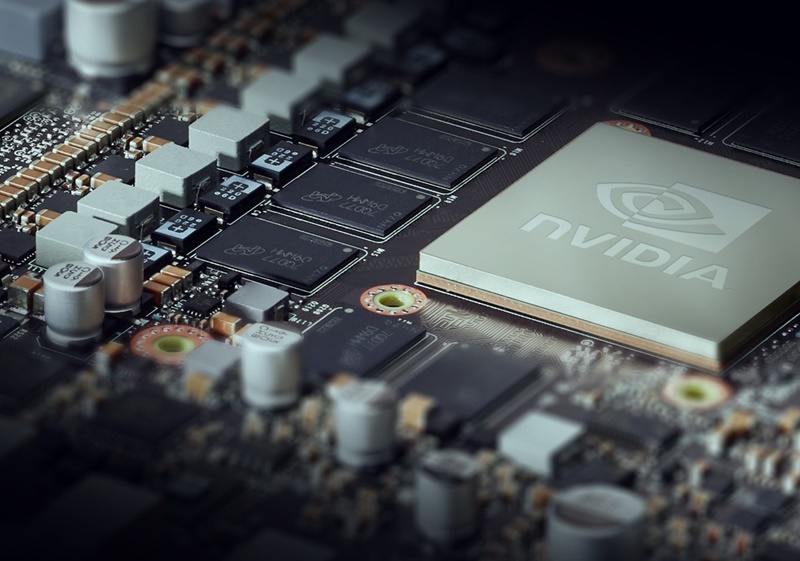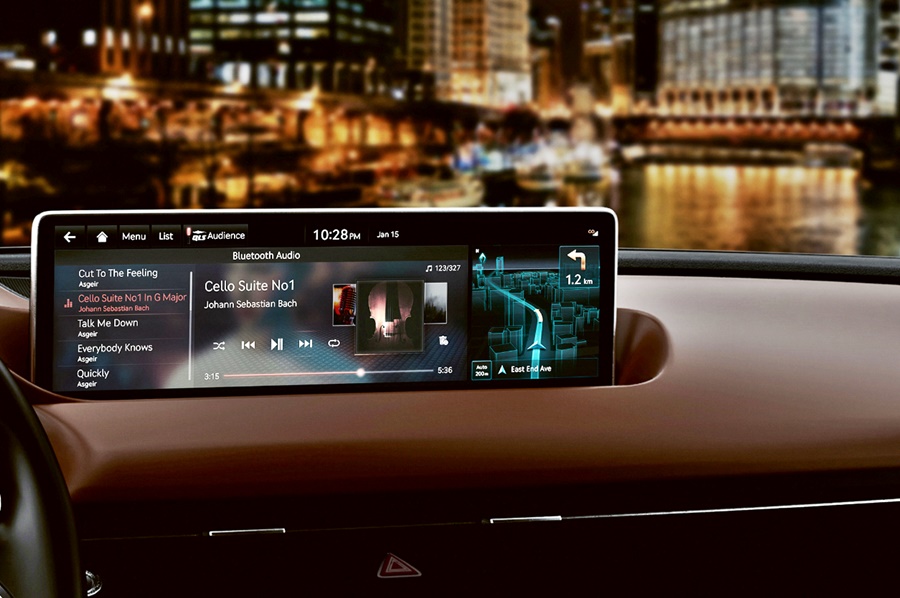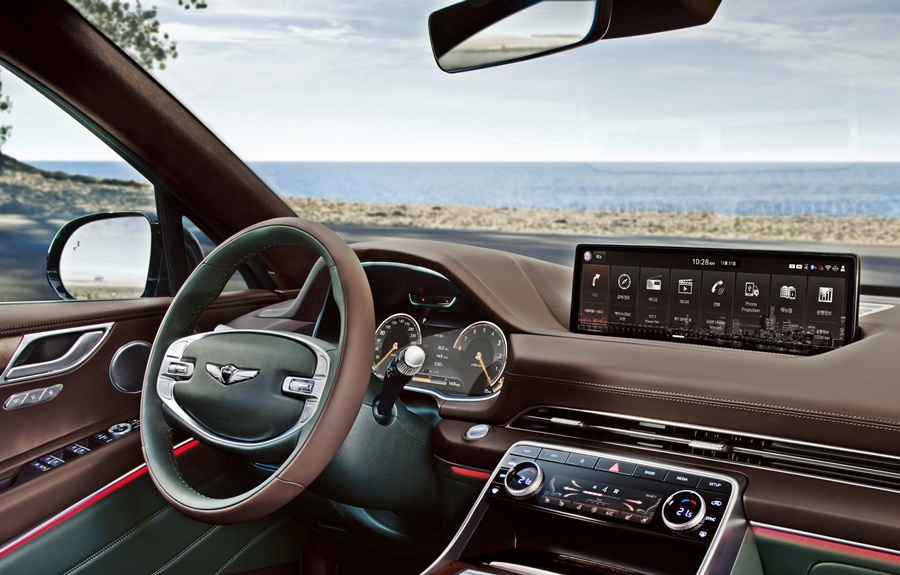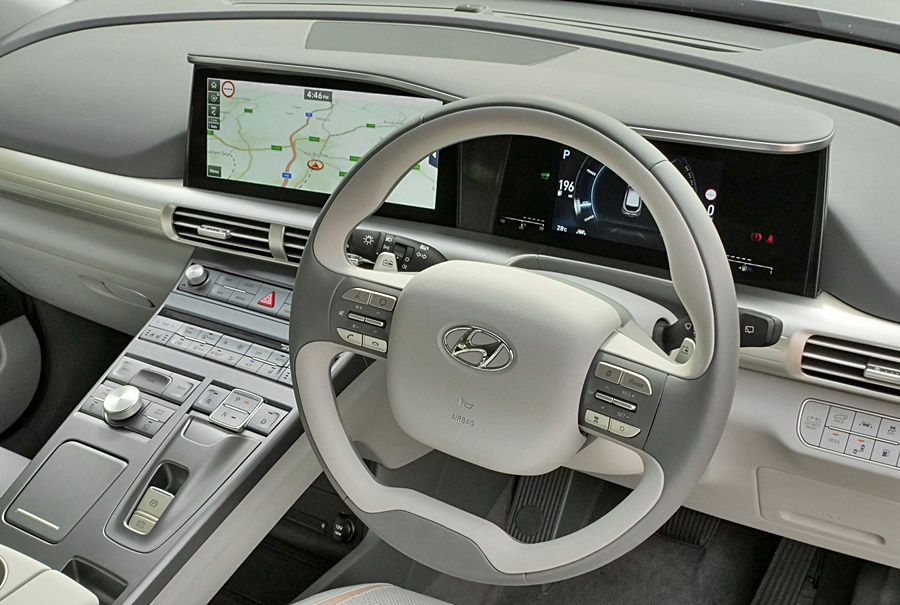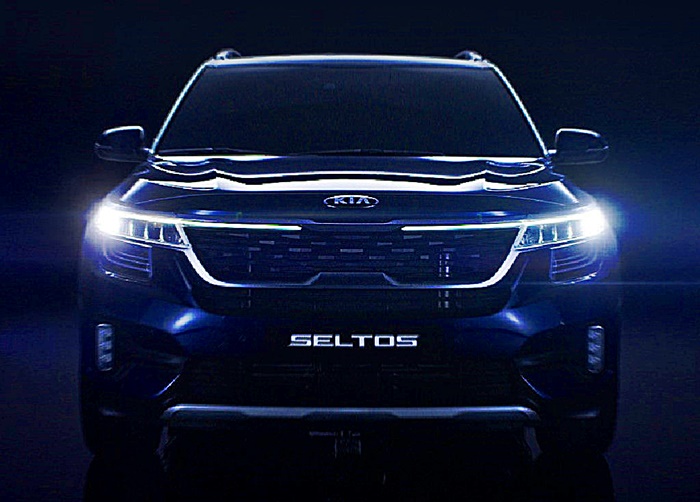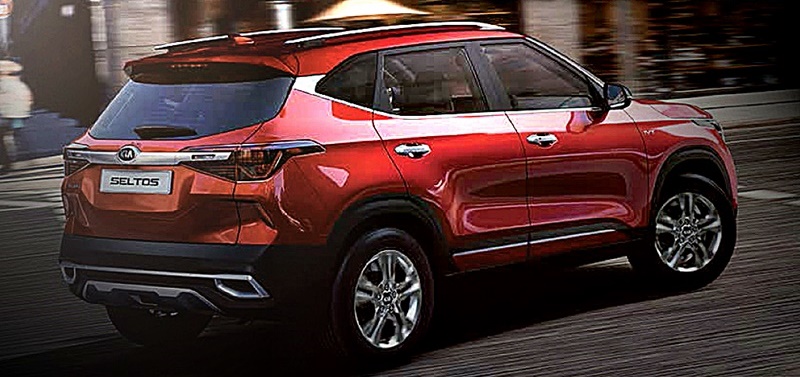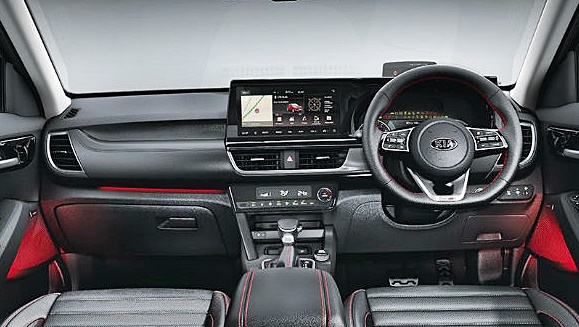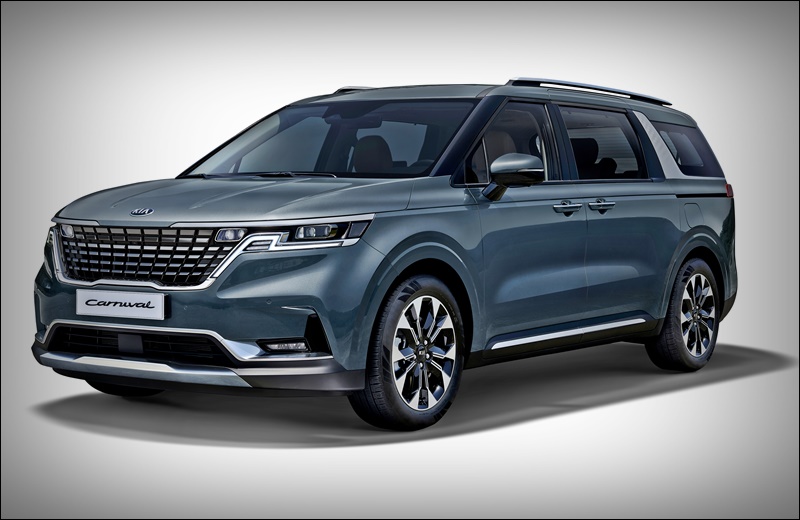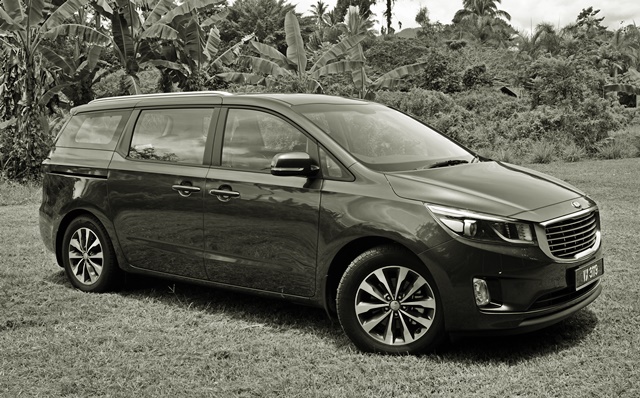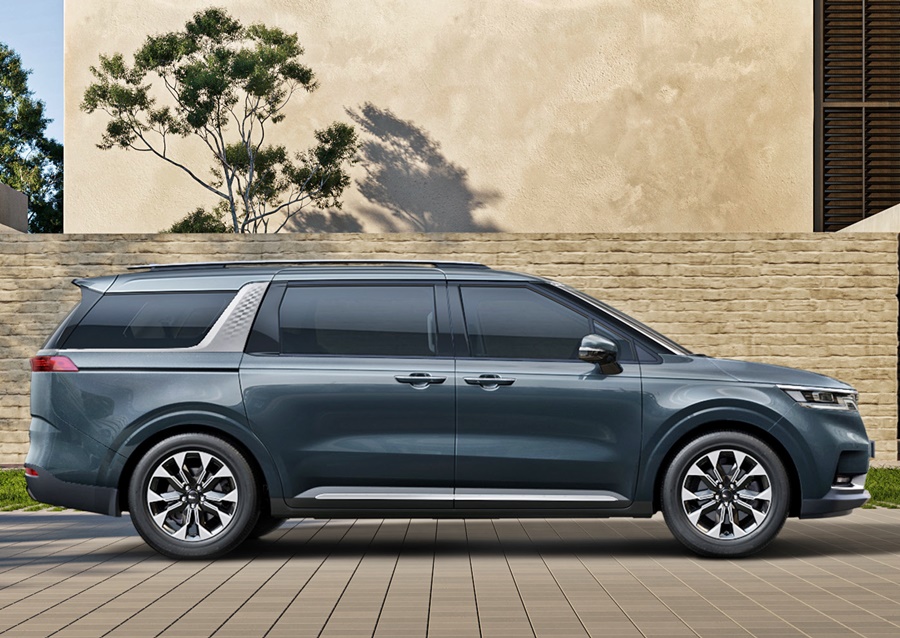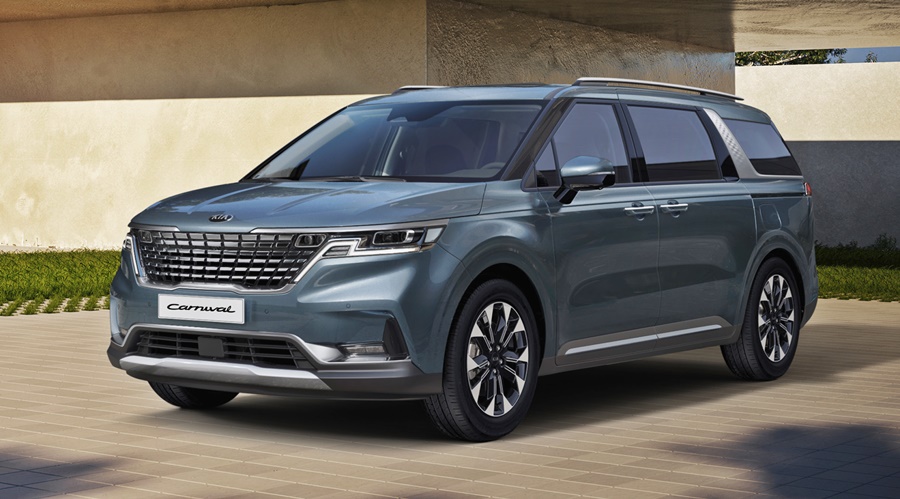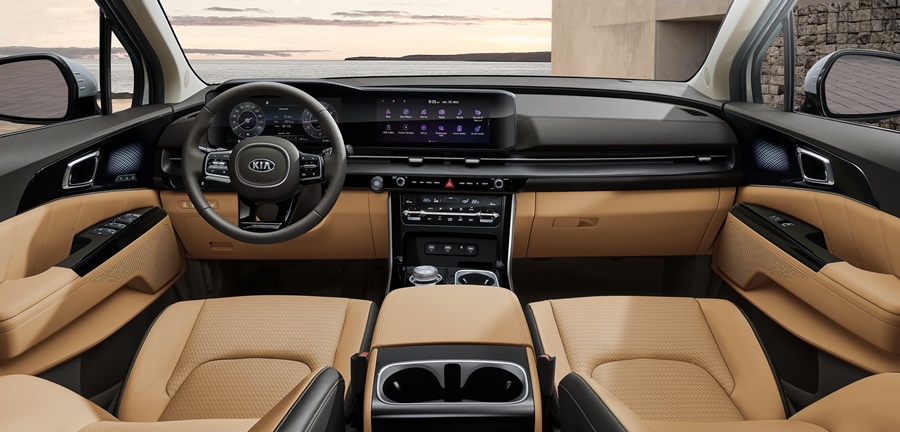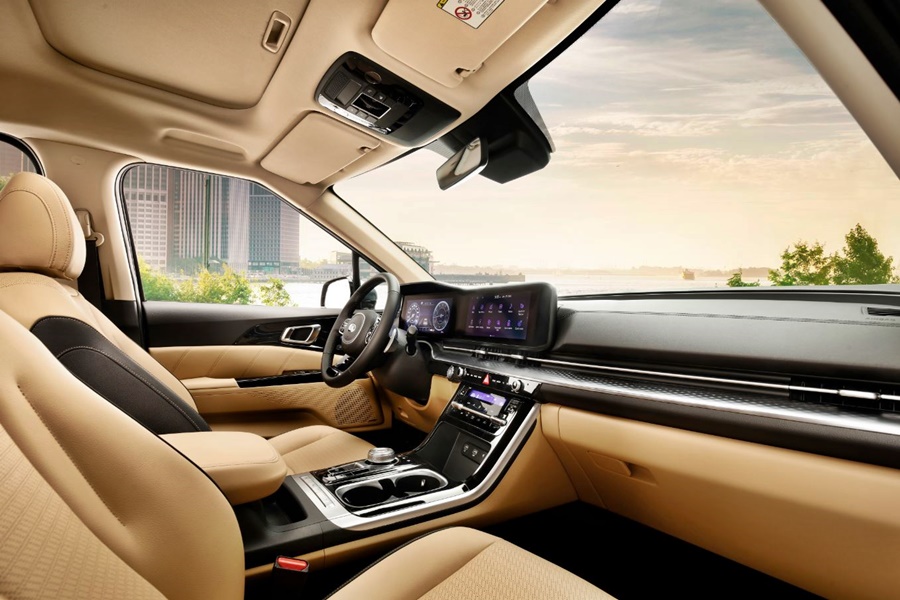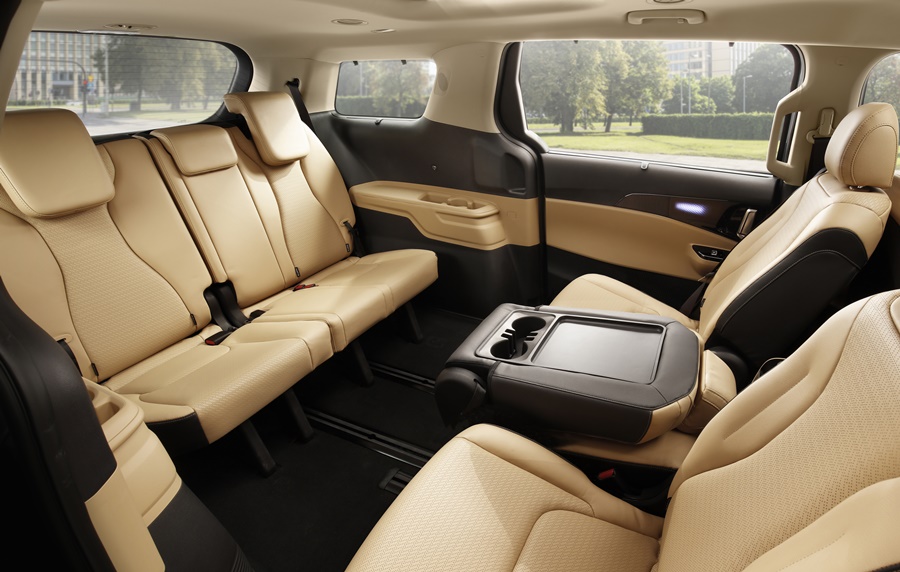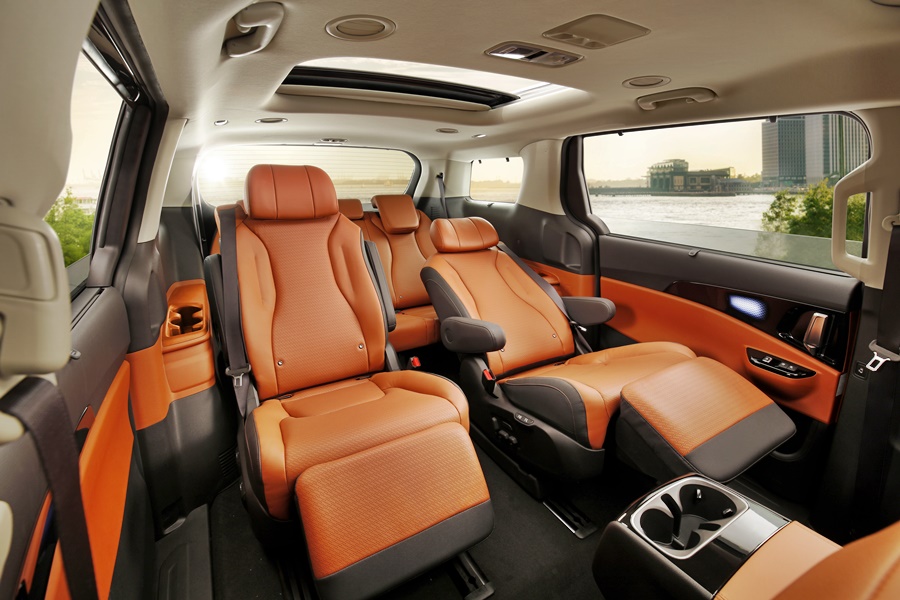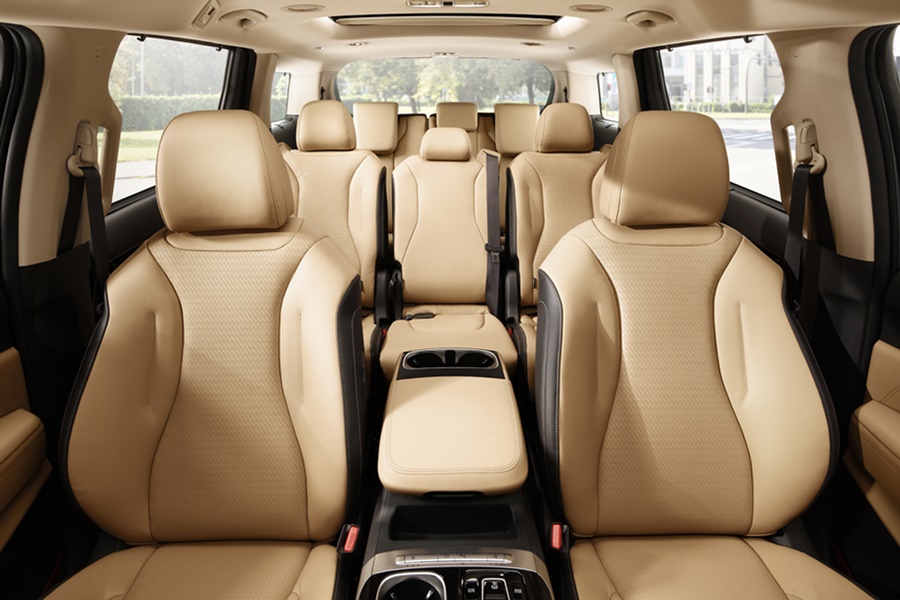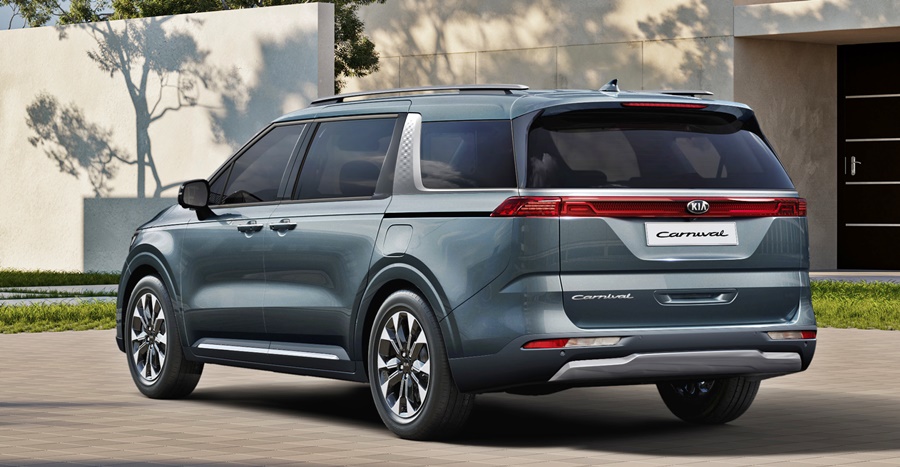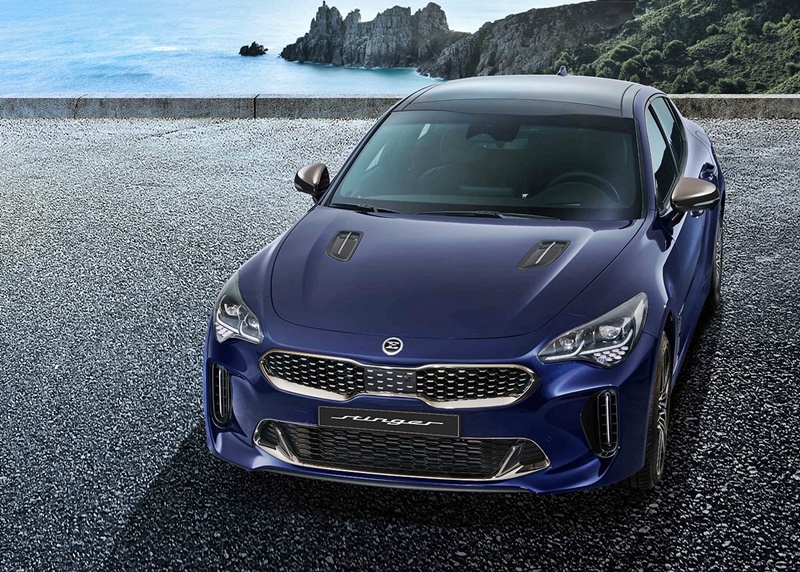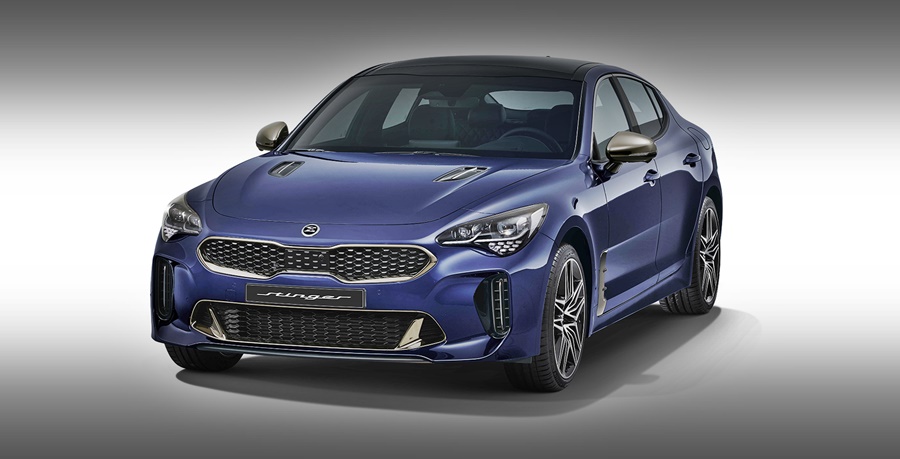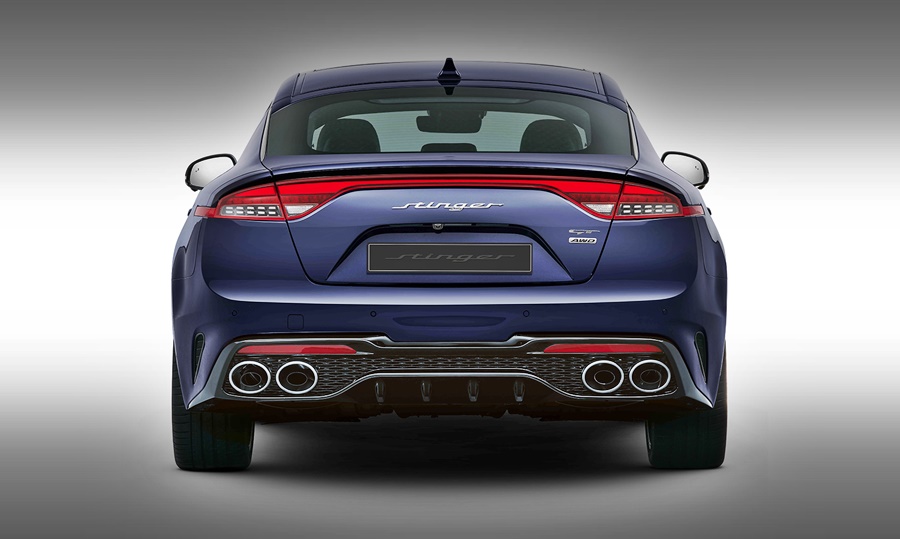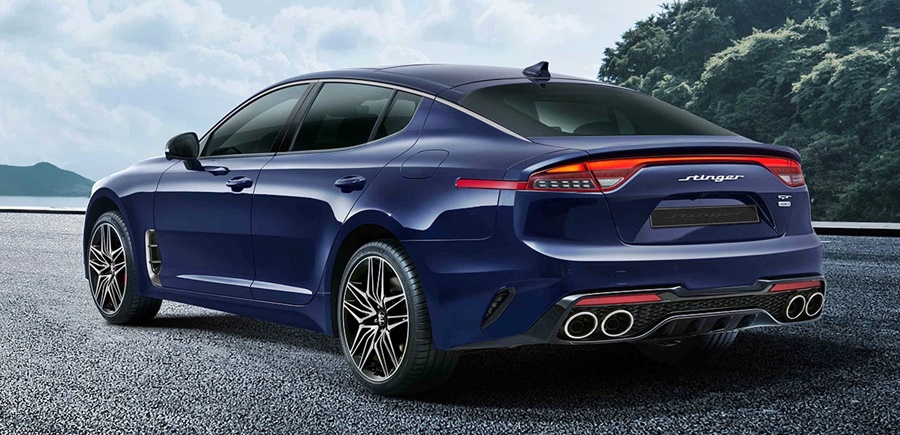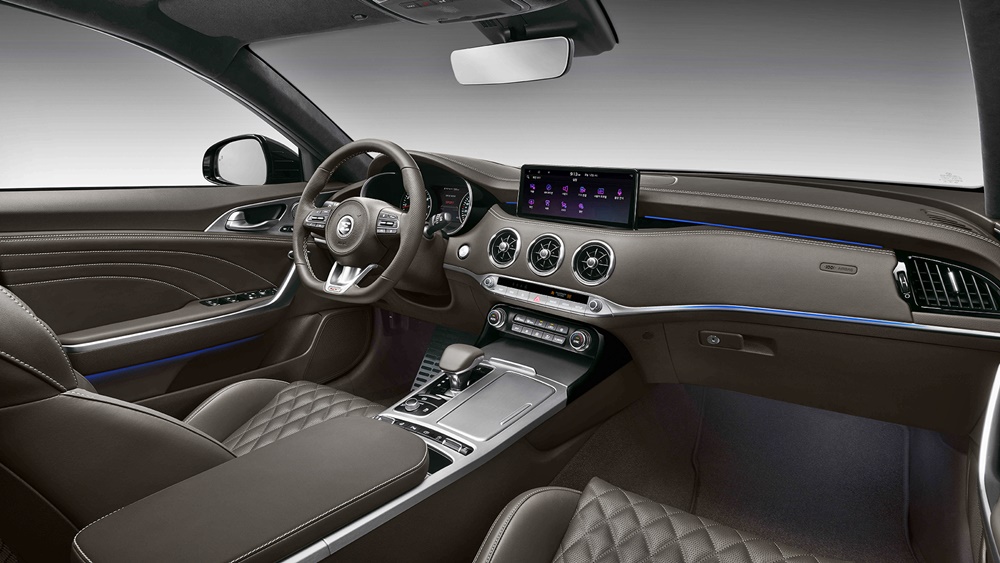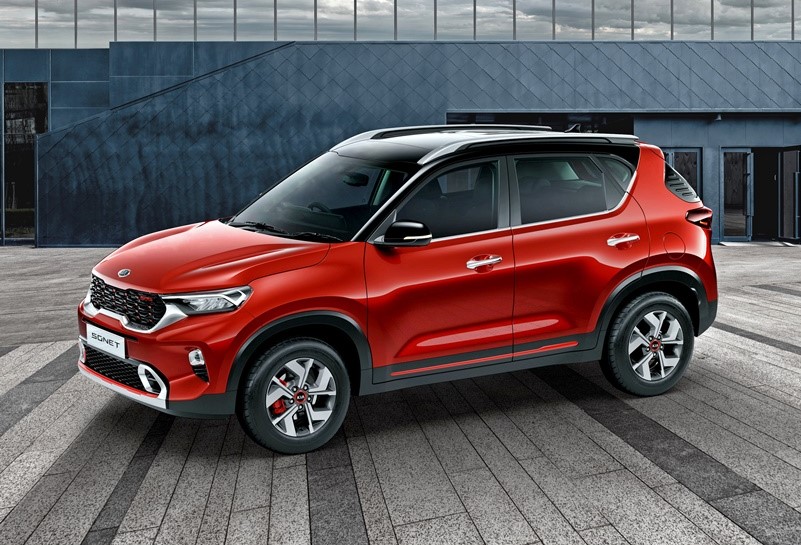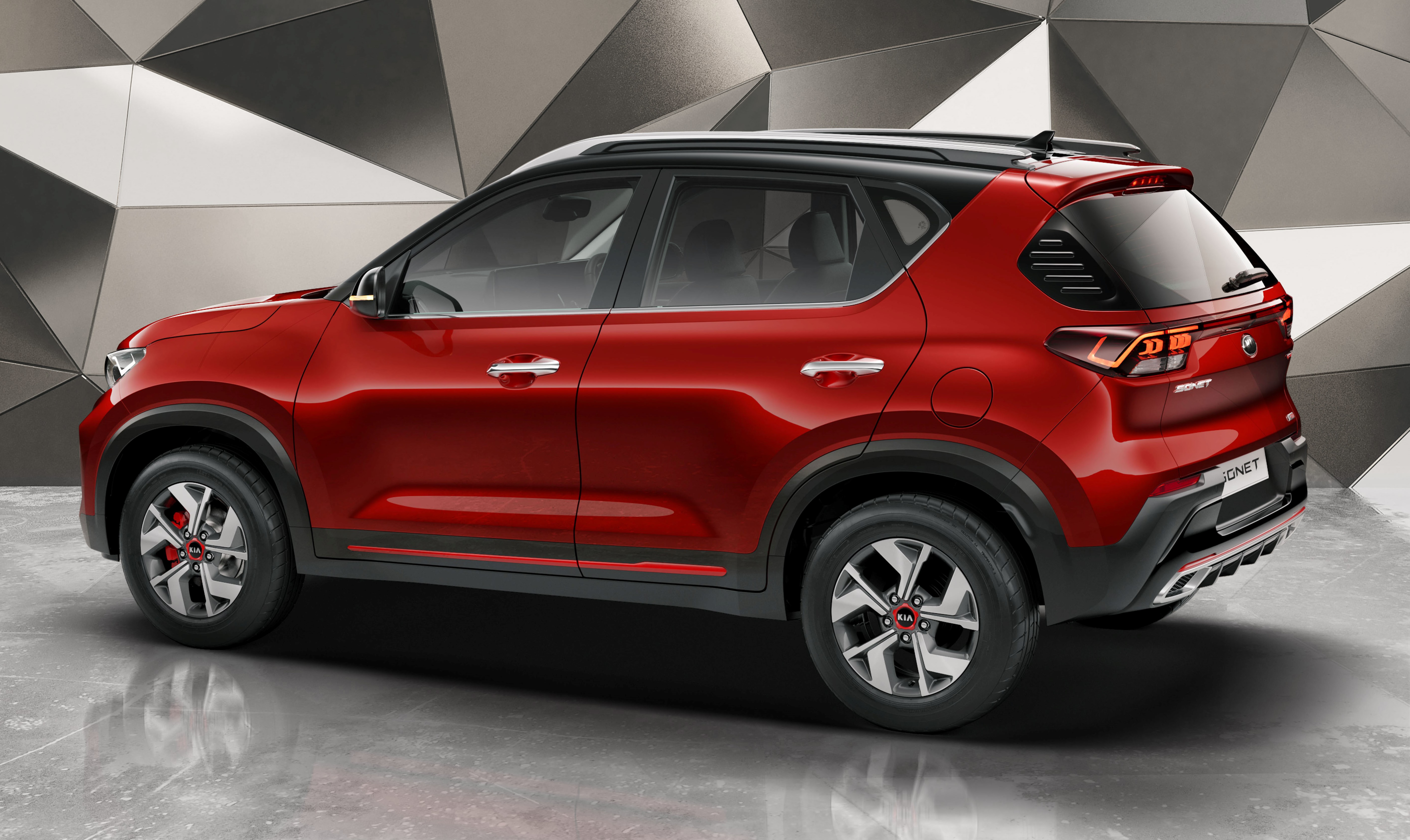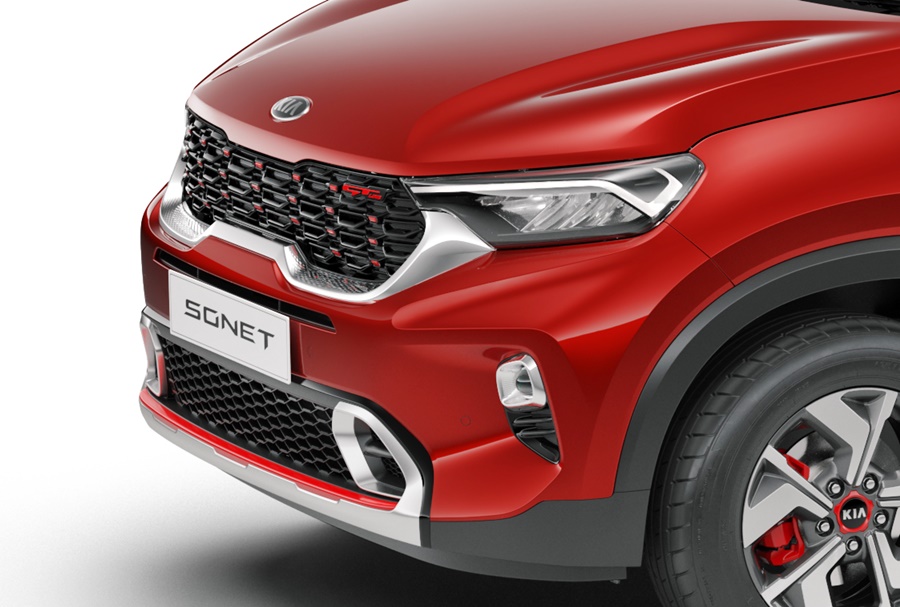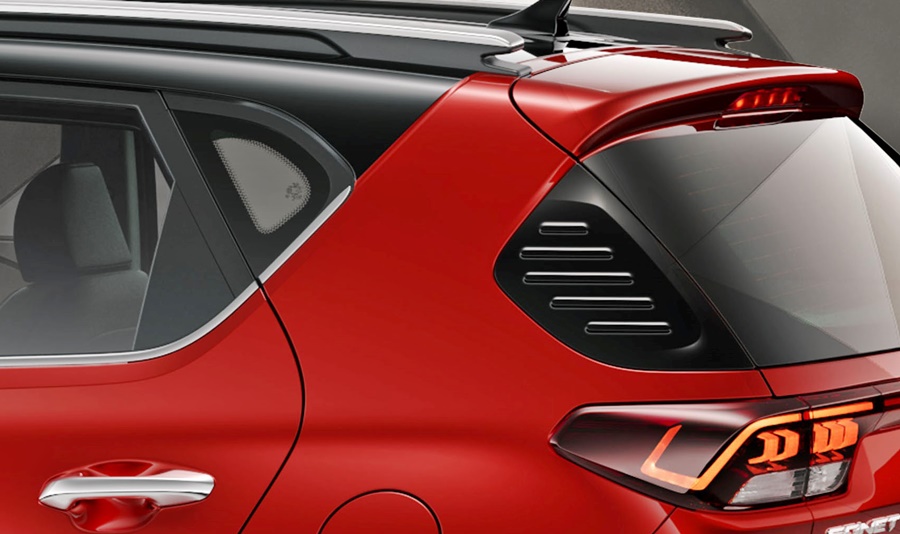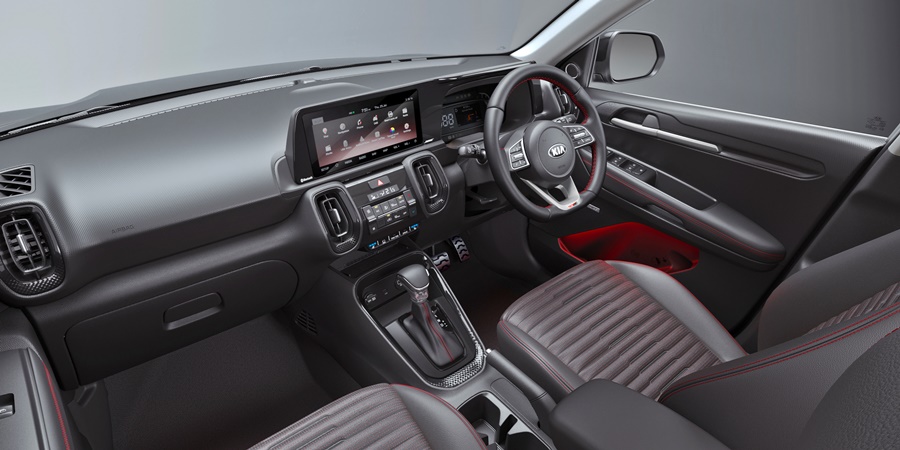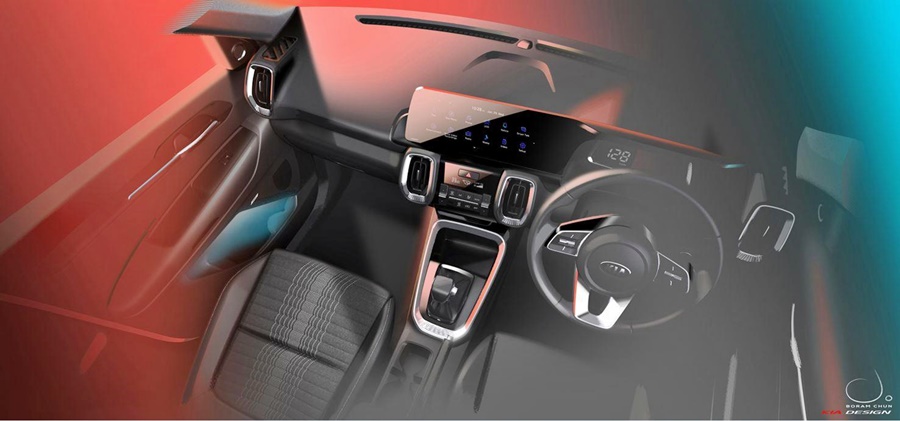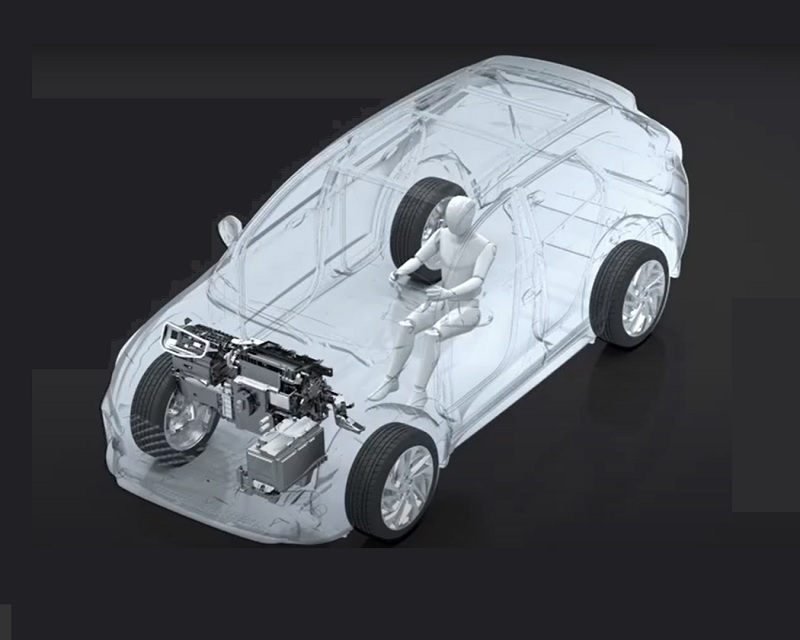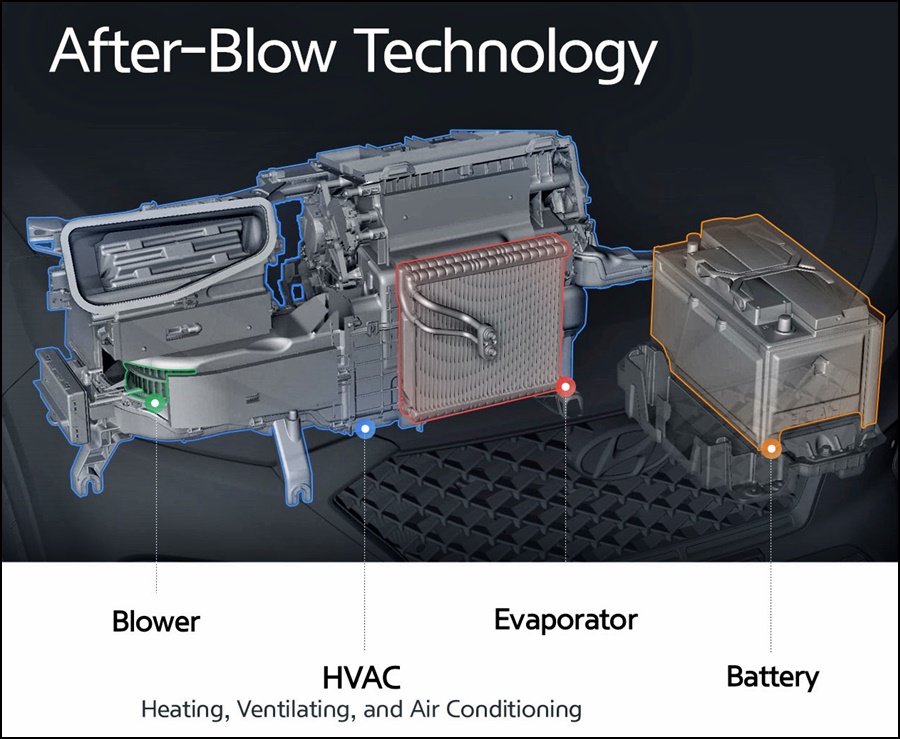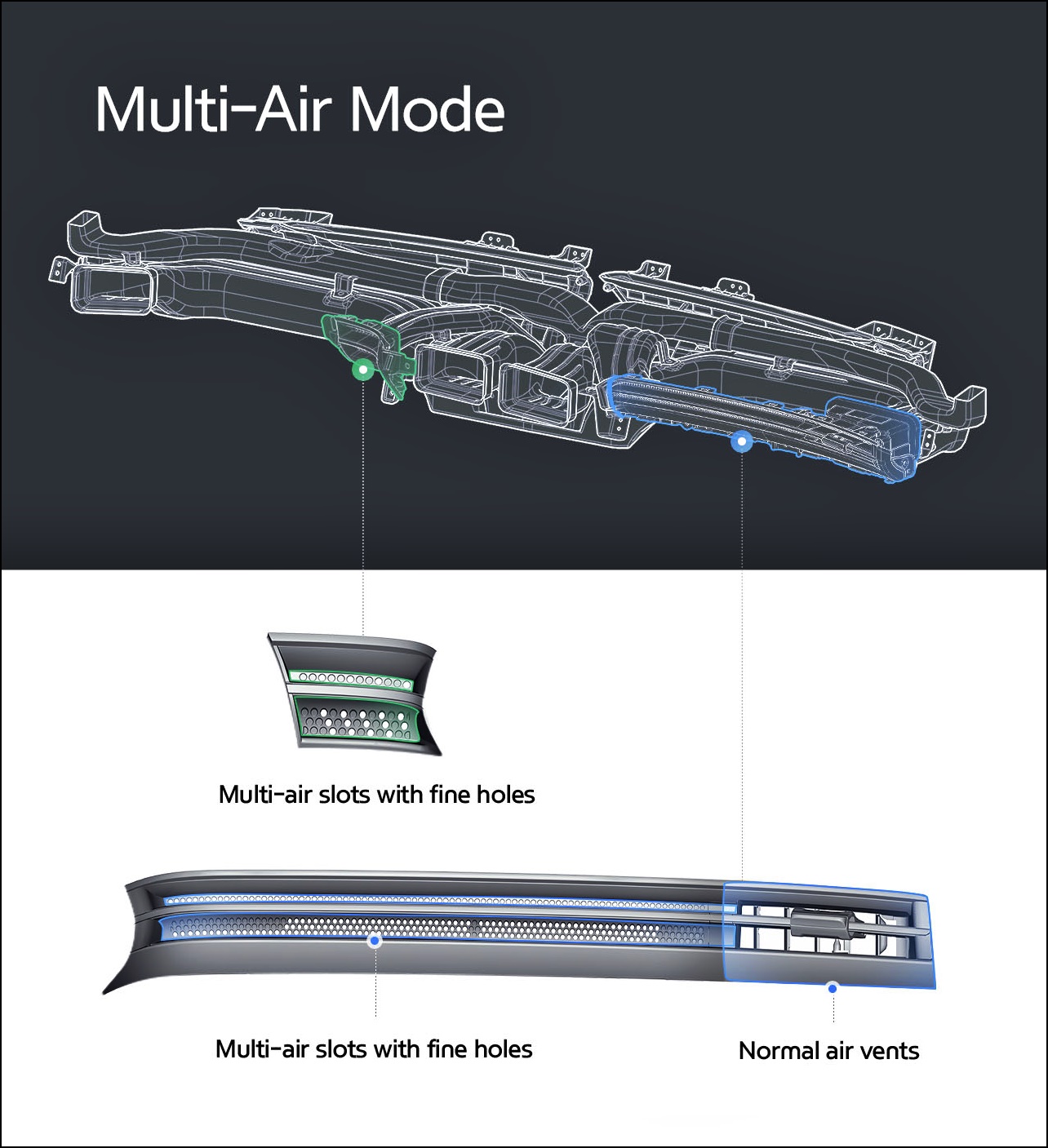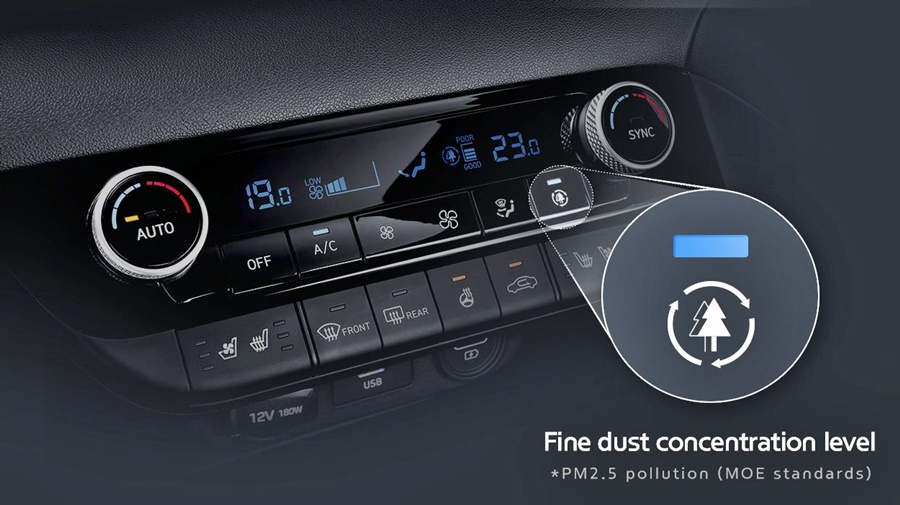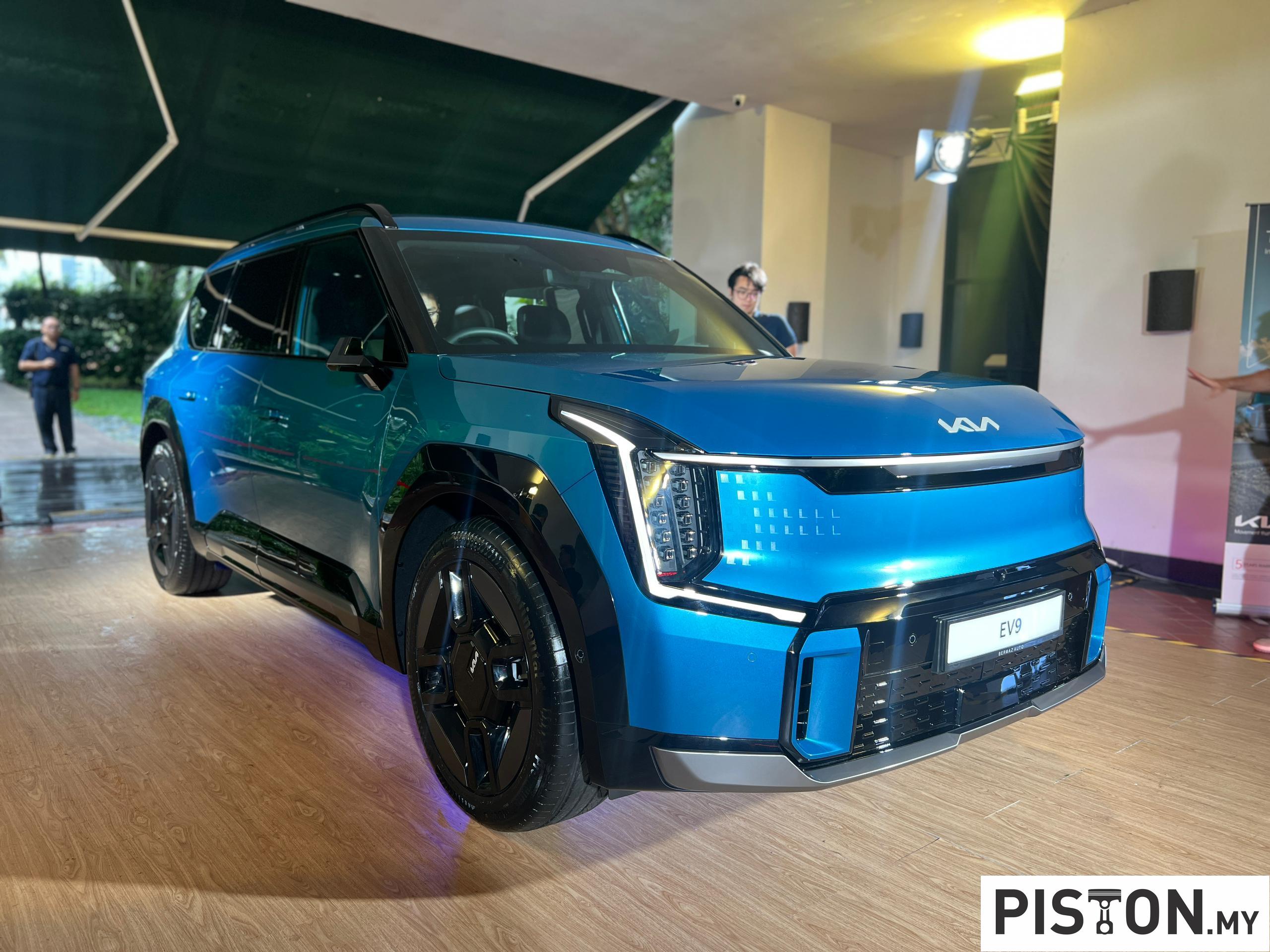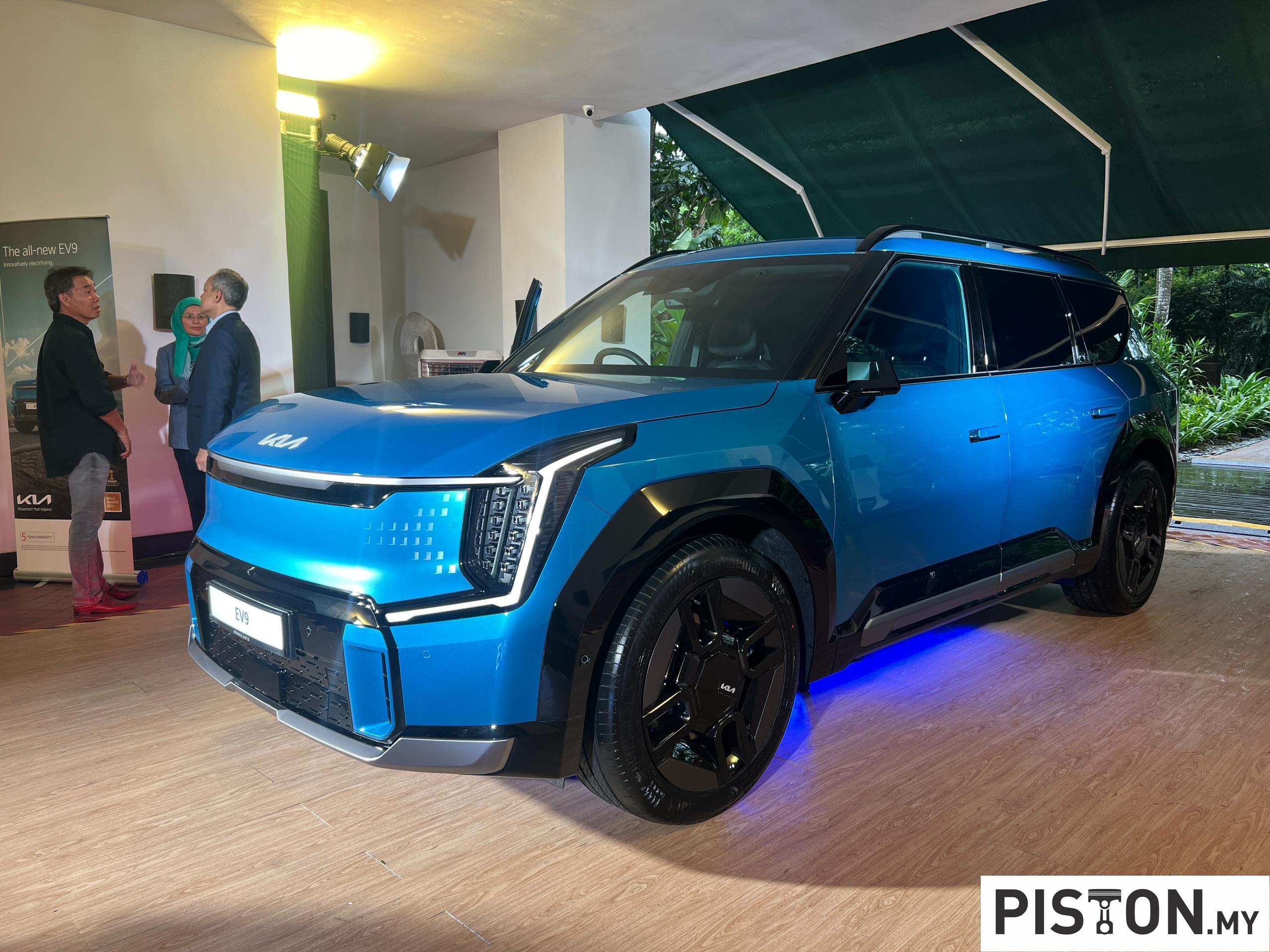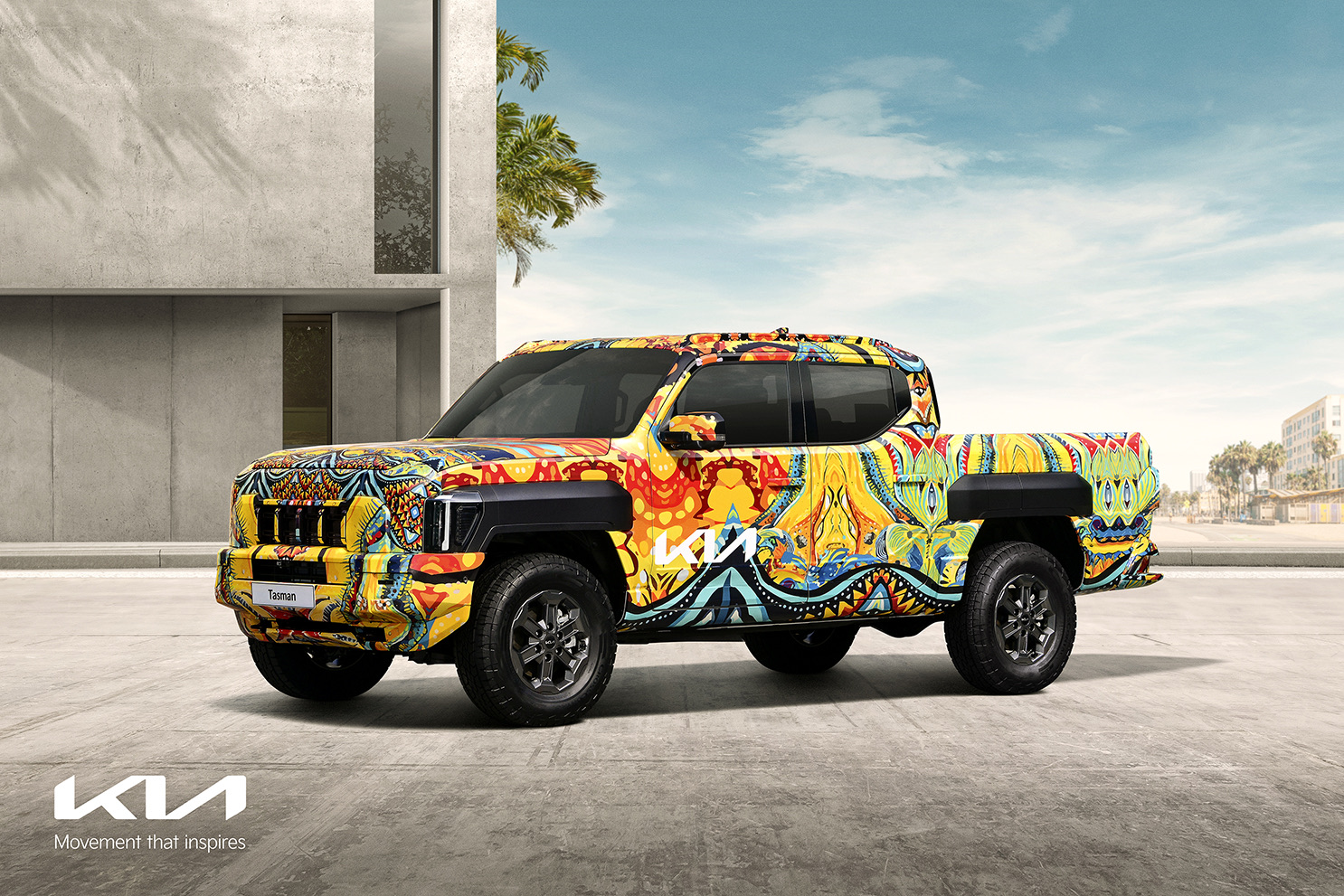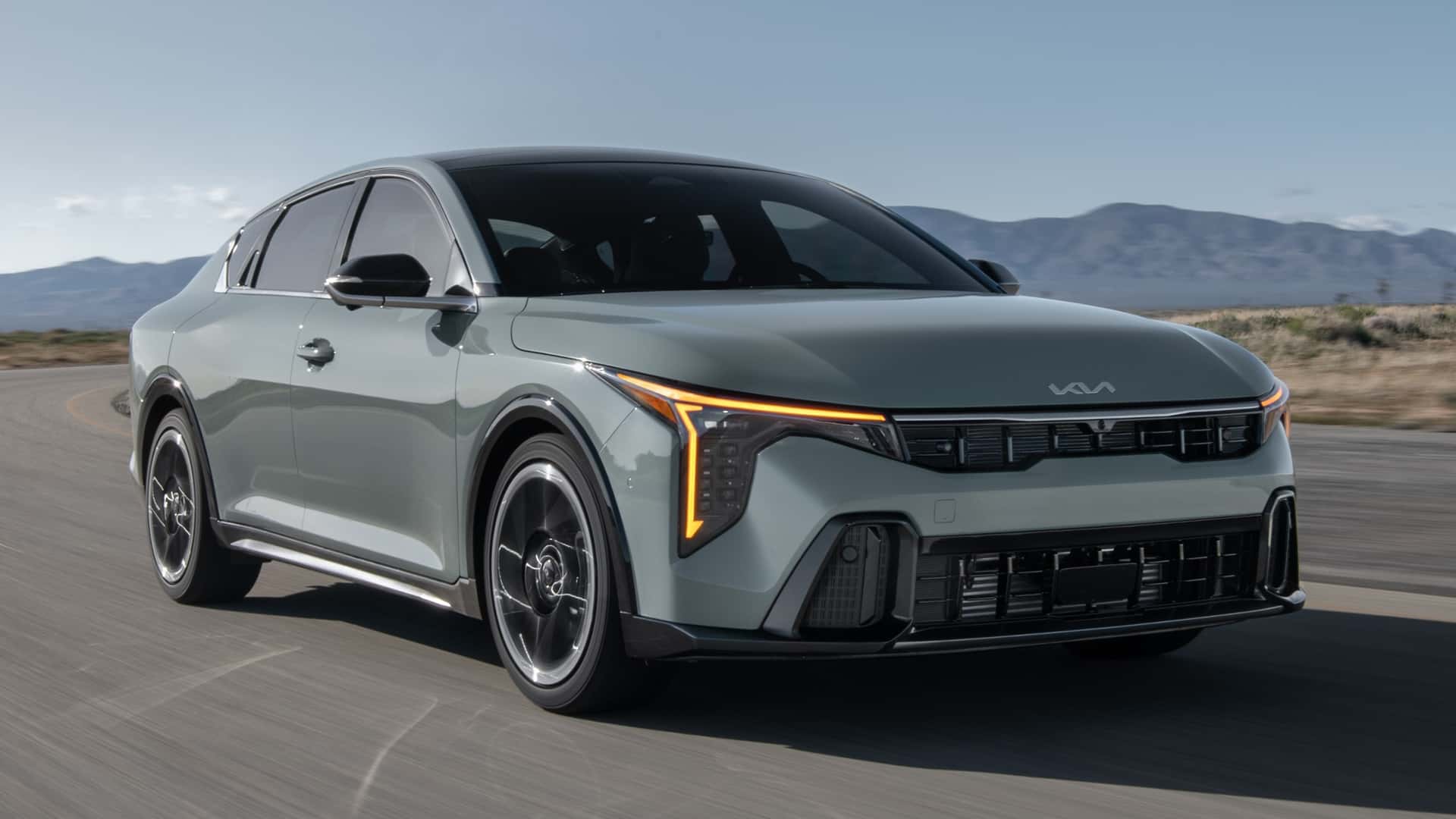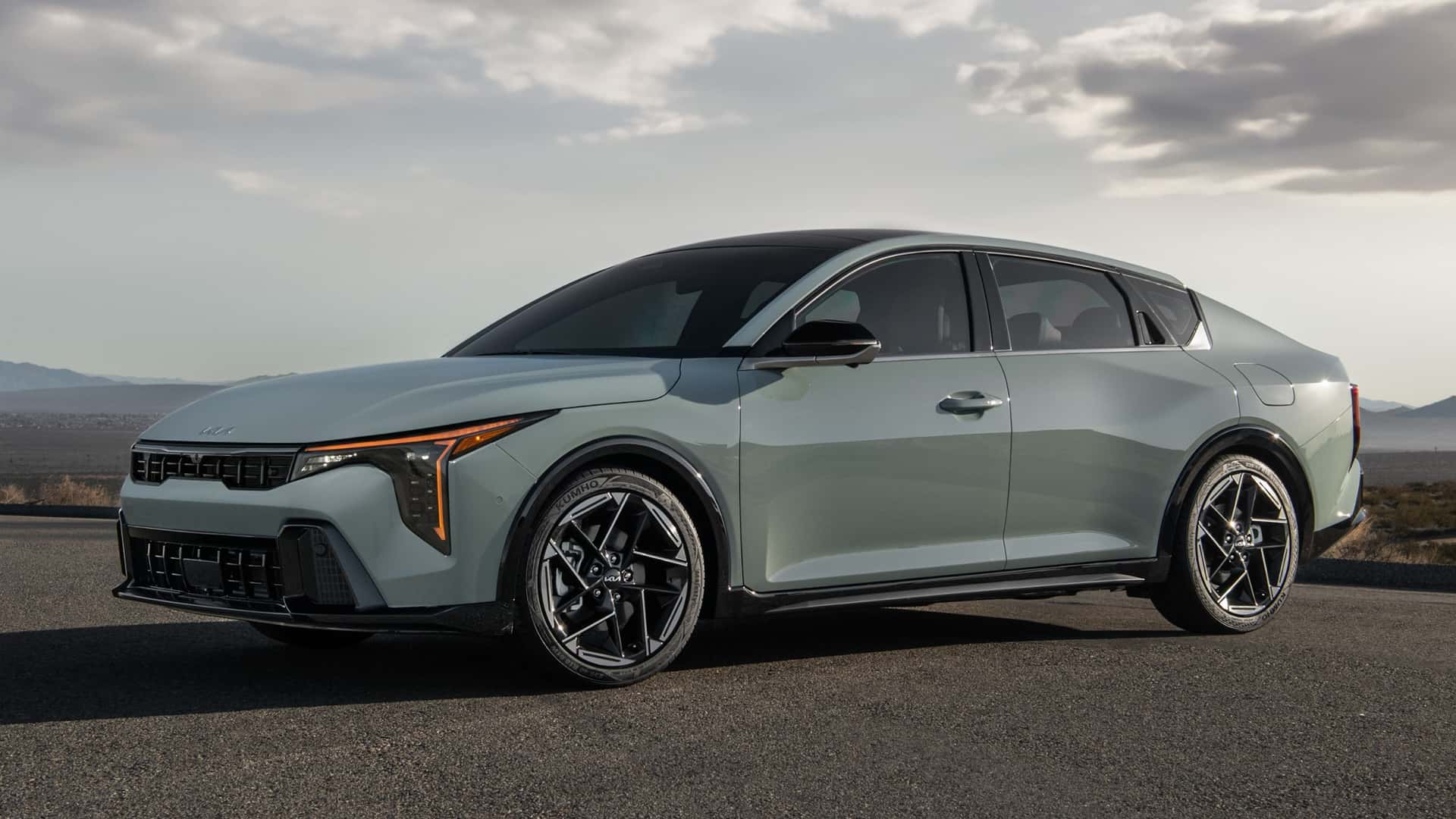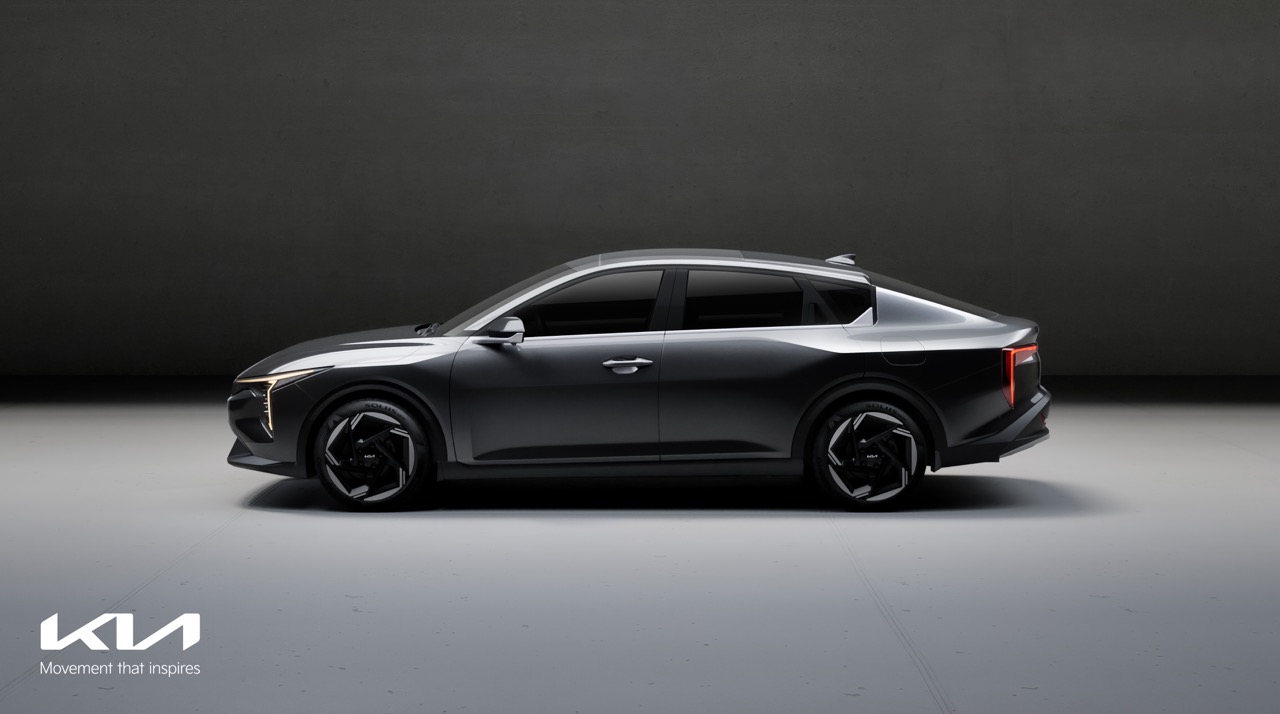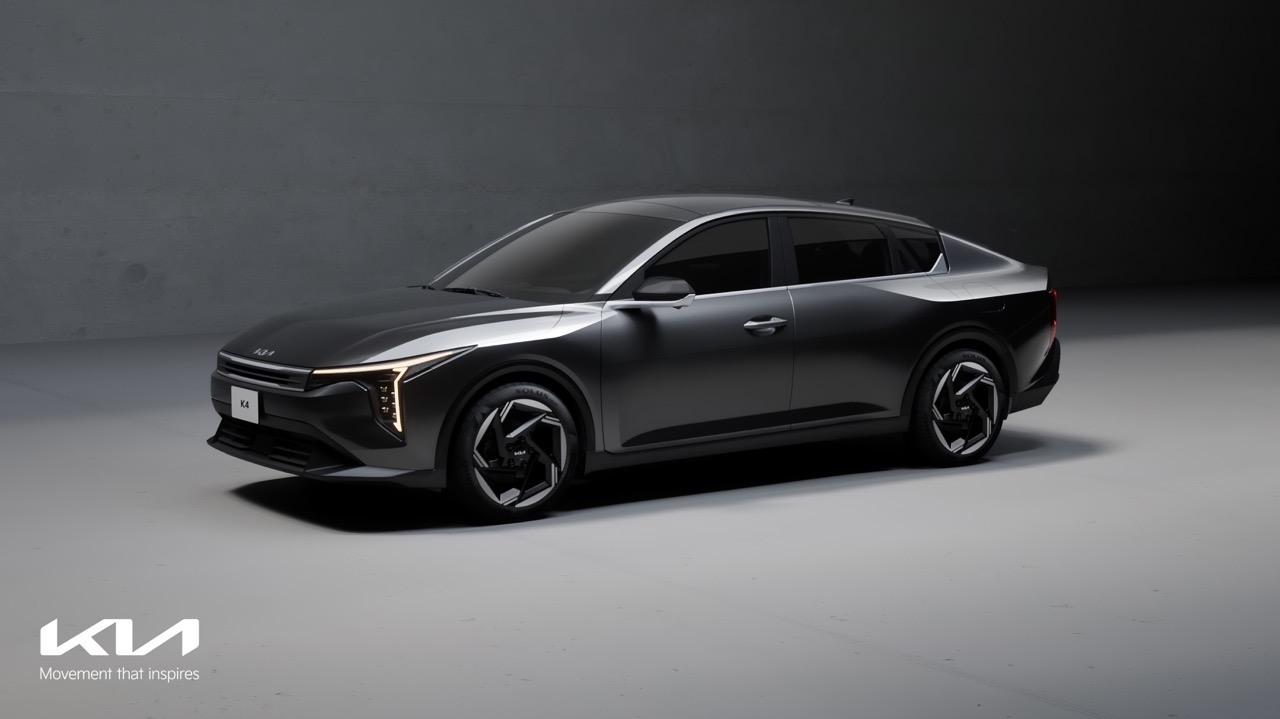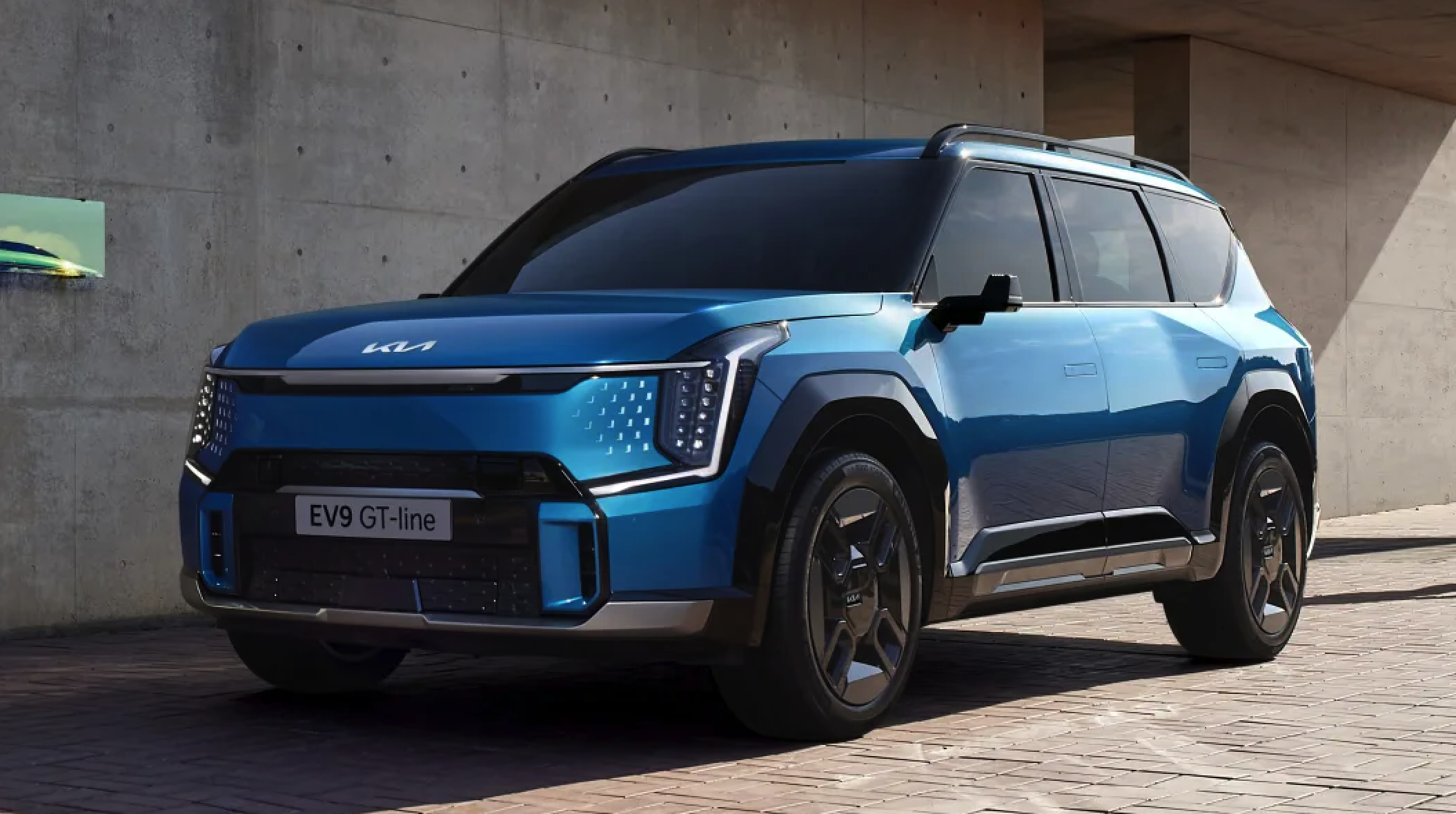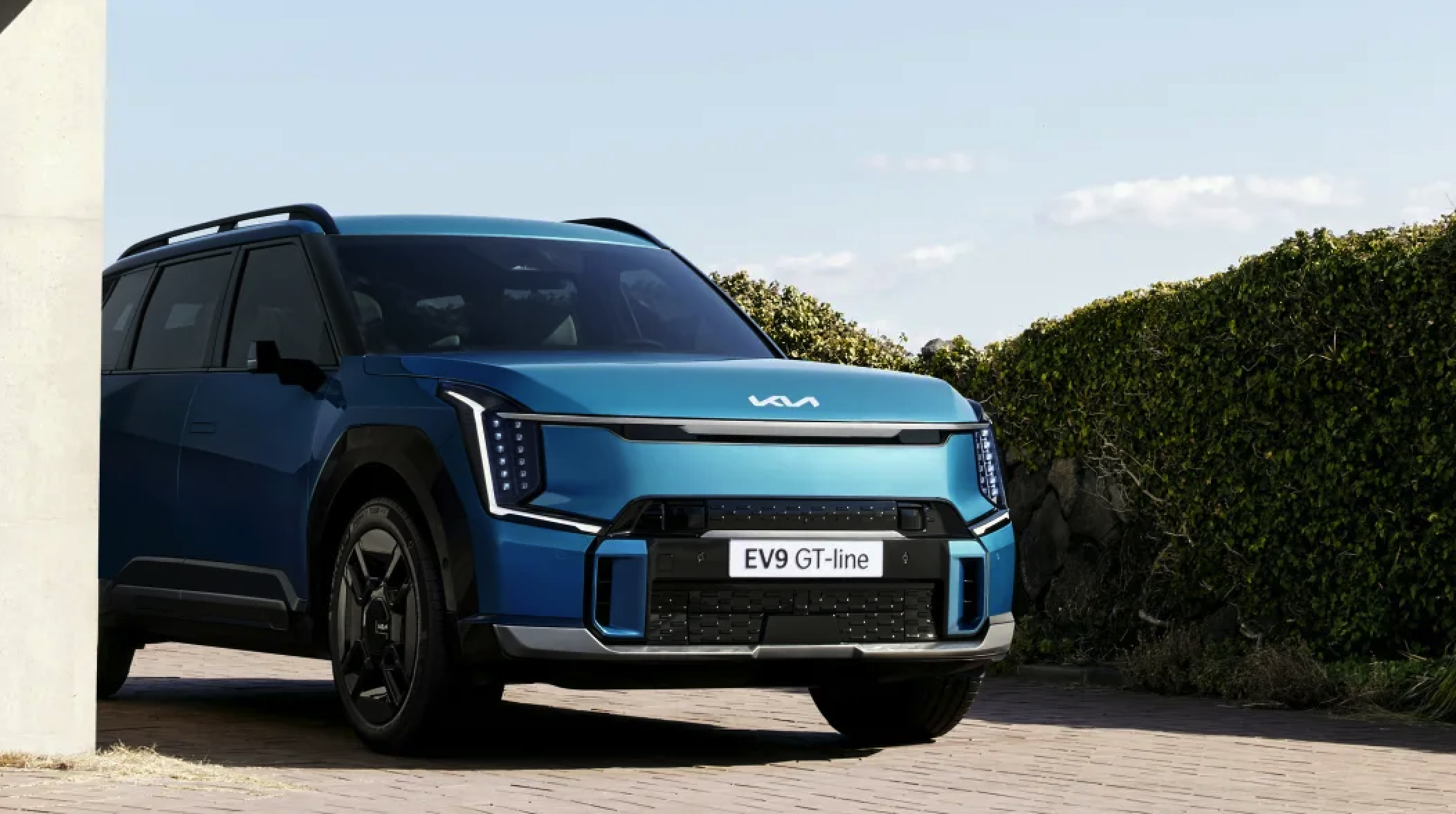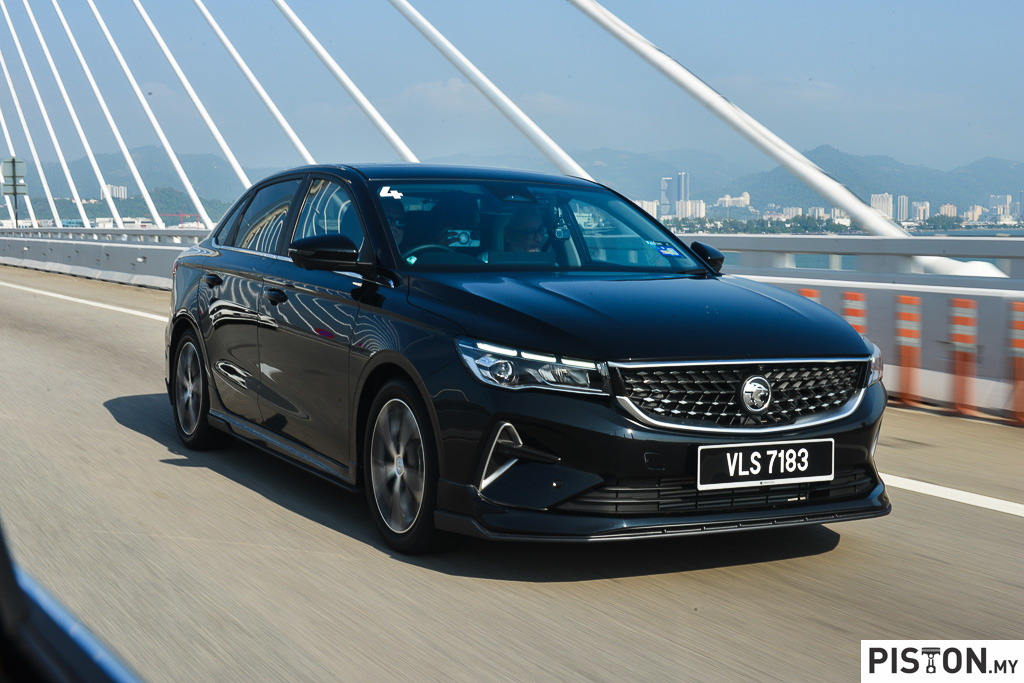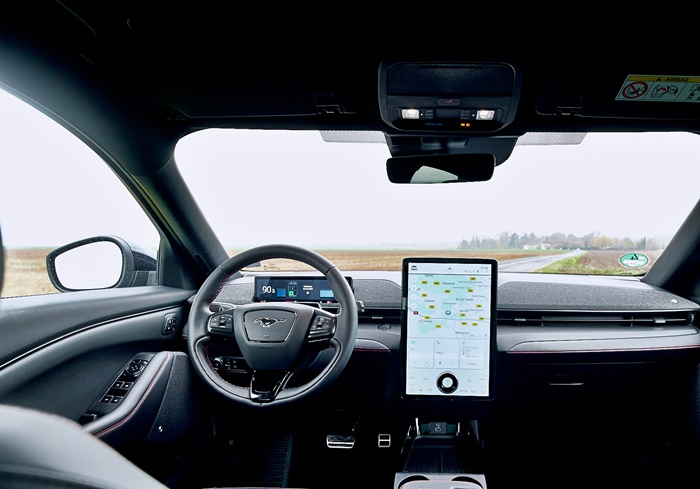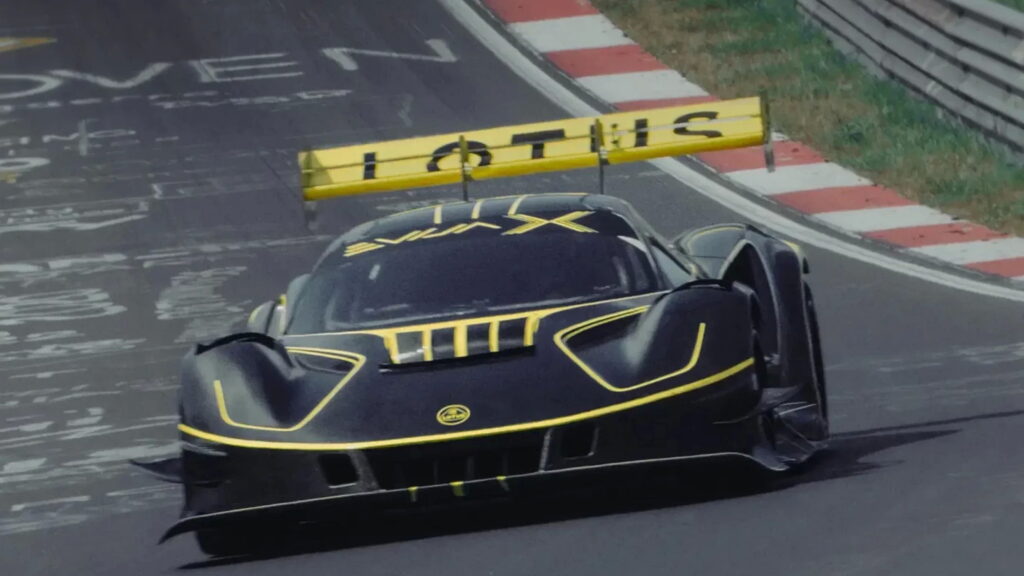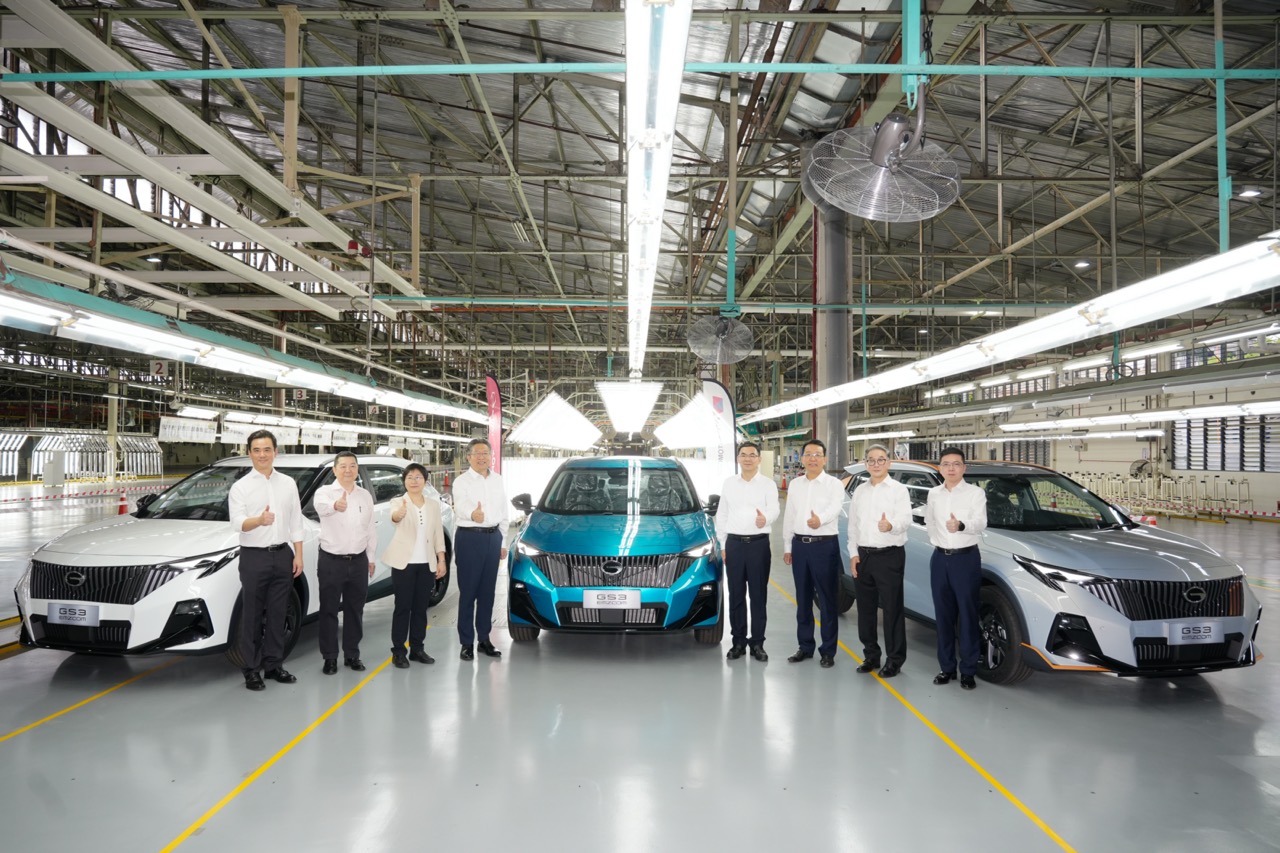Kia’s big push into the EV market and the first part of its transition to the new era of electrification starts this year with the launch of the EV6, the Korean carmaker’s first model that uses the Hyundai Motor Group’s dedicated new platform for battery electric vehicles (BEVs). To go on sale from the middle of the year (bookings accepted online in certain markets from today), the EV6 has a crossover SUV style (though it doesn’t really look like one) which is what today’s car-buyers want.
Key to acceptance of BEVs is a long cruising range and short charging times, both of which Kia has addressed. The 800V charging capability enables the EV6 to go from 10% to 80% charge in the battery pack in just 18 minutes. As for range, up to 510 kms is claimed on a full battery pack.
Multiple powertrain configurations
The EV6 will be offered in multiple fully-electric, zero-emission powertrain configurations, including long-range (77.4 kWh) and standard-range (58.0 kWh) high-voltage battery packs. This is Kia’s first electric vehicle to be available with 2WD) or AWD options, the latter offering enhanced dynamic capability in even the most challenging conditions.
The 2WD 77.4 kWh EV6 can travel over 510 kms on a single charge and with maximum torque of 605 Nm torque available on the AWD version, the EV6 can accelerate from 0 to 100 km/h in a claimed 5.2 seconds. The 77.4 kWh battery pack powers a 168 kW (229 ps) electric motor powering the rear wheels; for AWD models, a 239 kW (325 ps) electric motor powers the front and rear wheels. The 58.0 kWh battery pack is paired with a 125 kW electric motor powering the rear wheels, and for AWD models a 173 kW electric motor powers the front and rear wheels.
“The GT version of EV6 demonstrates our technological leadership through its combination of outstanding high-speed charging and acceleration performance like a super sportscar. With our dedicated EV platform, there is no need for compromise between inspiring spaciousness and performance,” said Albert Biermann, President and Head of R&D Division for Hyundai Motor Group.
800V ultra-Fast Charging
The EV6 has 800V and 400V charging capabilities, without the need for additional components or adapters. The car is capable of a high-speed charge from 10% to 80% in 18 minutes on all variations or a top-up charge for 100 kms of driving range in less than 4.5 minutes when pairing 2WD with the 77.4-kWh battery option.

The car’s charging system is more flexible than previous generation BEVs, thanks to an Integrated Charging Control Unit (ICCU). The ICCU enables a new vehicle-to-load (V2L) function, which is capable of discharging energy from the vehicle battery. The V2L function can supply up to 3.6 kW of power and is capable, as an example, of operating a 55-inch television and air conditioner simultaneously for more than 24 hours. The system is also able to charge another EV, if needed.
With more than 35% charge left in the battery, the EV6 can still tow items weighing up to 1,600 kgs. Together with the V2L function, EV6 owners can take everything they need on an outdoor adventure with friends and family and do it all with zero emissions.
Energy recuperation
With energy-recuperation technologies driving range can be maximized. This includes Kia’s latest-generation energy-efficient heat pump, which scavenges waste heat from the car’s coolant system. This ensures that at 7 degrees C., the car can achieve 80% of the range that would be possible at 25 degrees C.
To accompany the EV6 into the new era is new design language which is guided by the brand’s new design philosophy ‘Opposites United’. This takes inspiration from the contrasts found in nature and humanity. At the centre of the design philosophy is a new visual identity evoking positive forces and natural energy, with contrasting combinations of sharp stylistic elements and sculptural shapes.
“EV6, as the first dedicated Kia EV, is a showcase of human-centred, progressive design and electrified power. We strongly believe EV6 is a compelling and relevant model for the new EV era. With EV6 we aimed to create a distinctive, impactful design by using a combination of sophisticated, high-tech features on pure and rich volumes while providing a dedicated EV aiming to define our future,” explained Karim Habib, the Senior Vice-President and Head of Kia Global Design Centre who was previously with BMW and Infiniti.
At the front, Kia’s familiar ‘tiger face’ has been re-interpreted for the digital era. Forming part of this ‘Digital Tiger Face’, daytime running lights display a sleek, modern appearance and include a ‘sequential’ dynamic light pattern. Below this, a low air intake visually widens the front of the car, accentuating its high-tech image.
The side profile displays a crossover-inspired silhouette, which is modern, sleek and aerodynamic. A character line runs along the bottom of the doors, curving upwards towards the rear wheelarches to visually elongate the profile of the car. Designed in part to realize ultimate aerodynamic performance, the rear displays a sloping C-pillar with an integrated black glossy insert which appears to extend the window glass.
Above this sits a prominent wing-type roof spoiler that channels air downwards towards a raised lower spoiler, which sits atop the car’s unique rear light cluster.
Versatile and spacious cabin
The interior design benefits greatly from the dedicated E-GMP platform. Despite the EV6’s compact exterior dimensions, its 2900 mm wheelbase allows a cabin space similar to many midsize SUVs. One of the most striking elements is a seamless high-tech curved infotainment screen. The simple form language of the wide screen and dashboard give the interior an open feel. Relaxation seats are slim, lightweight and contemporary, and clad in modern, visually interesting and robust fabrics created using recycled plastics – equivalent to 111 plastic water bottles.
The EV6 has intelligent and flexible interior packaging and an abundance of cabin storage areas, including 520 litres of boot space with the second-row seats in place, or approximately 1,300 litres when the seats are folded down. This being an EV, there is also a front boot which offers and additional 52 litres of stowage space for 2WD models and 20 litres for AWD models.
The EV6 also features an augmented reality (AR) head-up display system, which projects driving information onto the base of the windscreen in the driver’s line of sight. The system displays alerts from the car’s Advanced Driver Assistance System, details of vehicle speed, and turn-by-turn navigation instructions.
The latest version of Kia’s innovative connected car system ‘Kia Connect’, previously named UVO, is included, featuring a range of Kia real time services and over-the-air (OTA) updates. Accessible through the touchscreen, Kia Connect allows users to find locations and pricing of EV charging points, view their vehicle’s charging status, plan smart charging schedules and check the range radius based on the remaining charge.
“EV6 also represents the beginning of Kia’s long-term commitment to sustainable mobility, accelerating the transition not only to clean transportation, but also products, materials and manufacturing,” said Ho Sung Song, Kia’s President & CEO.


